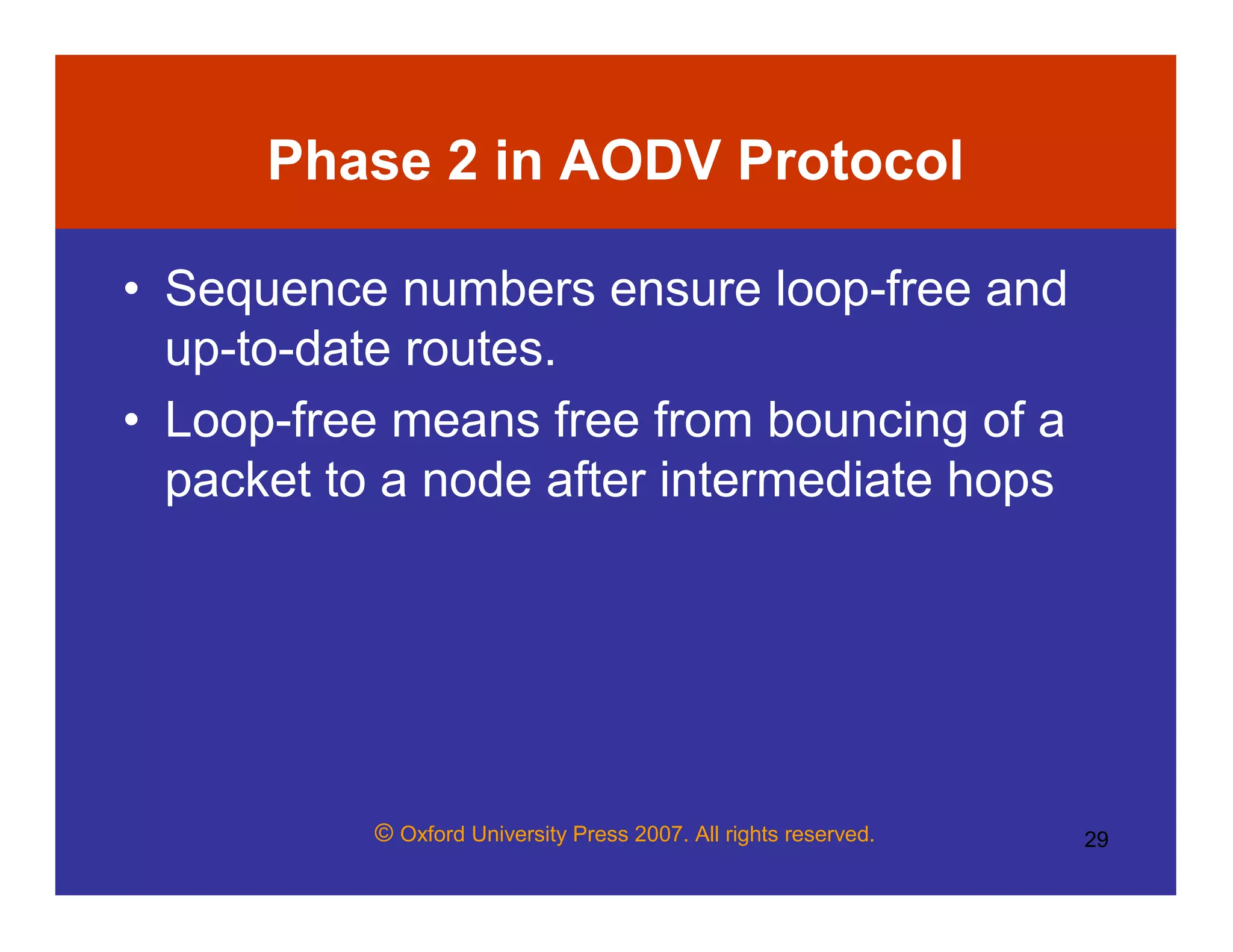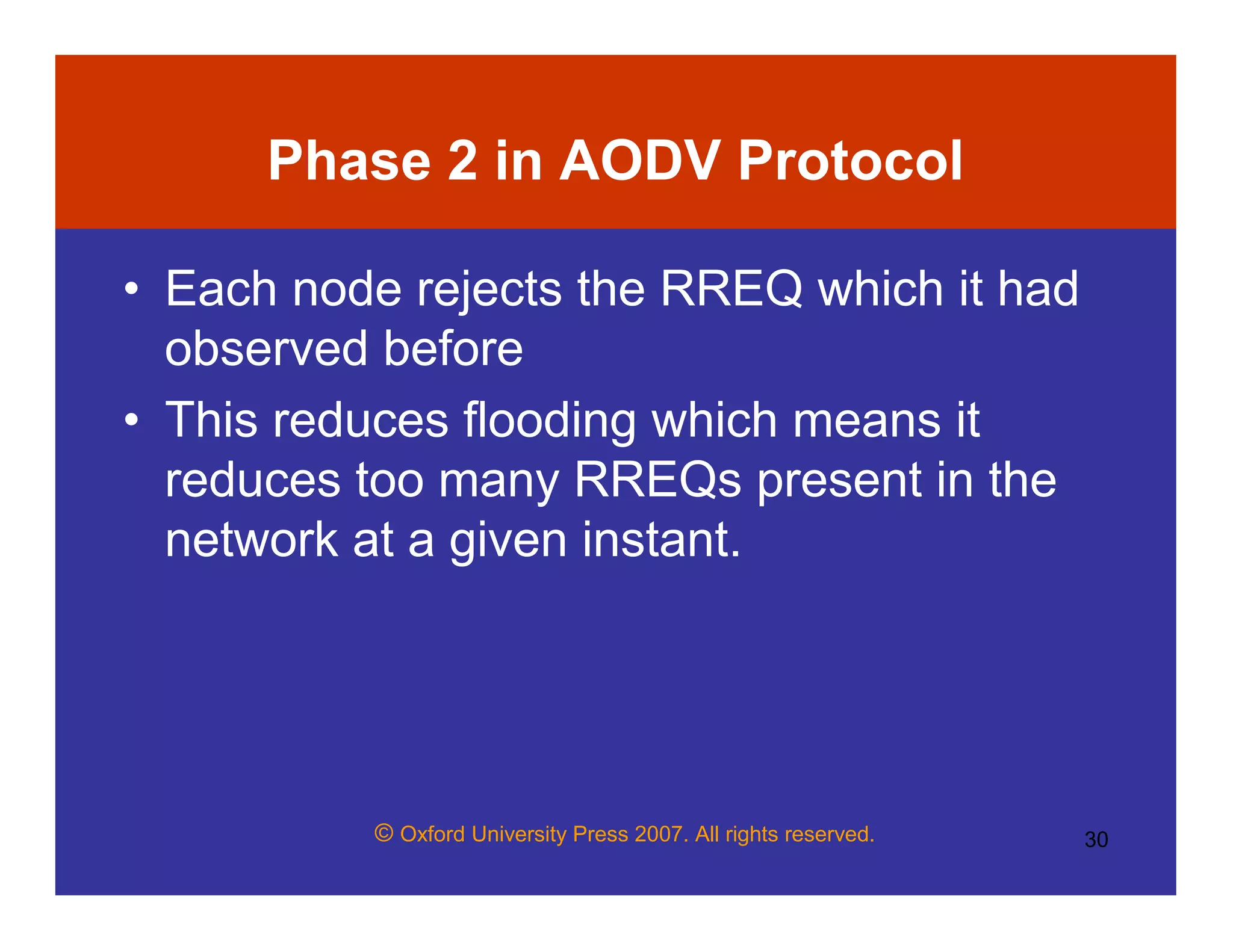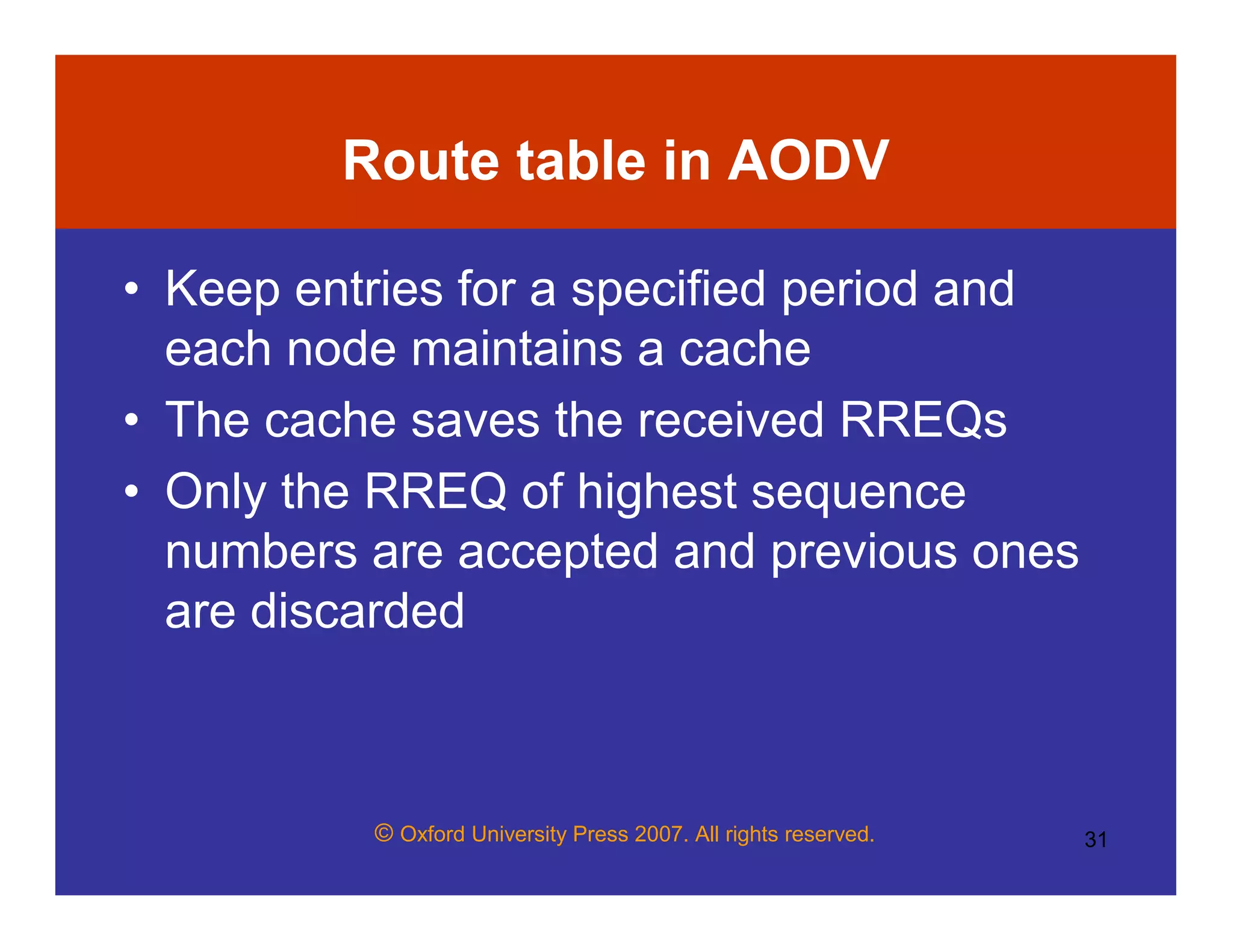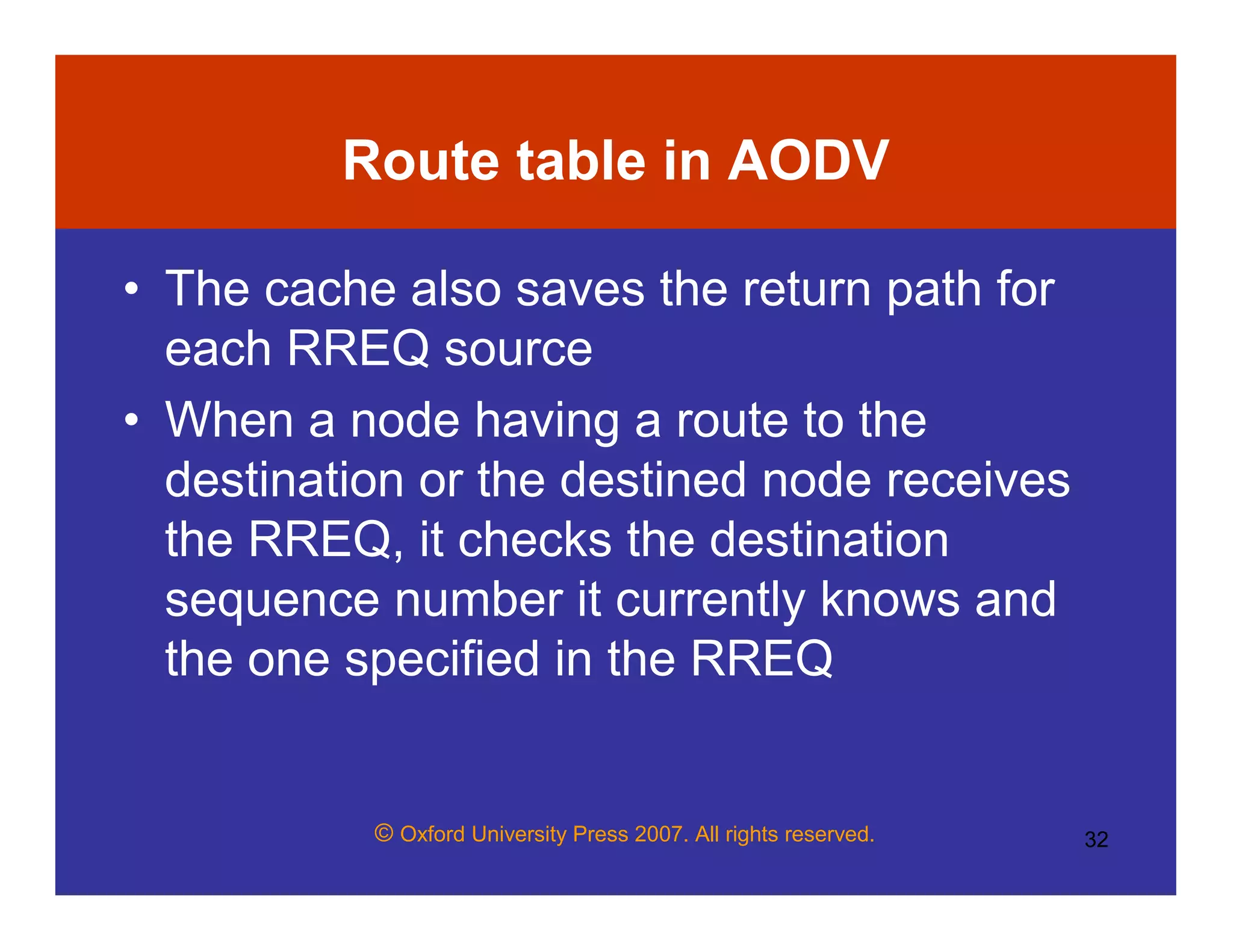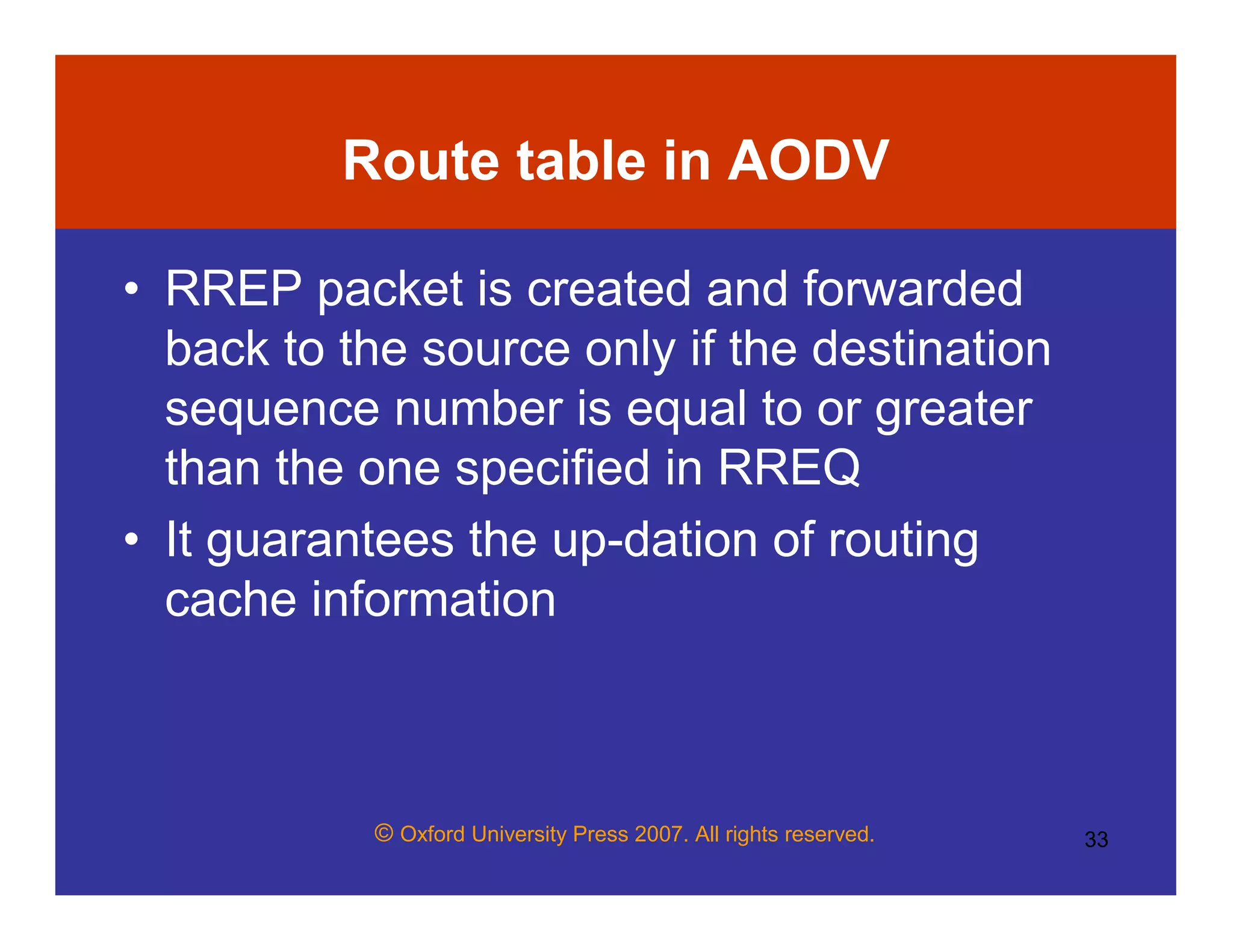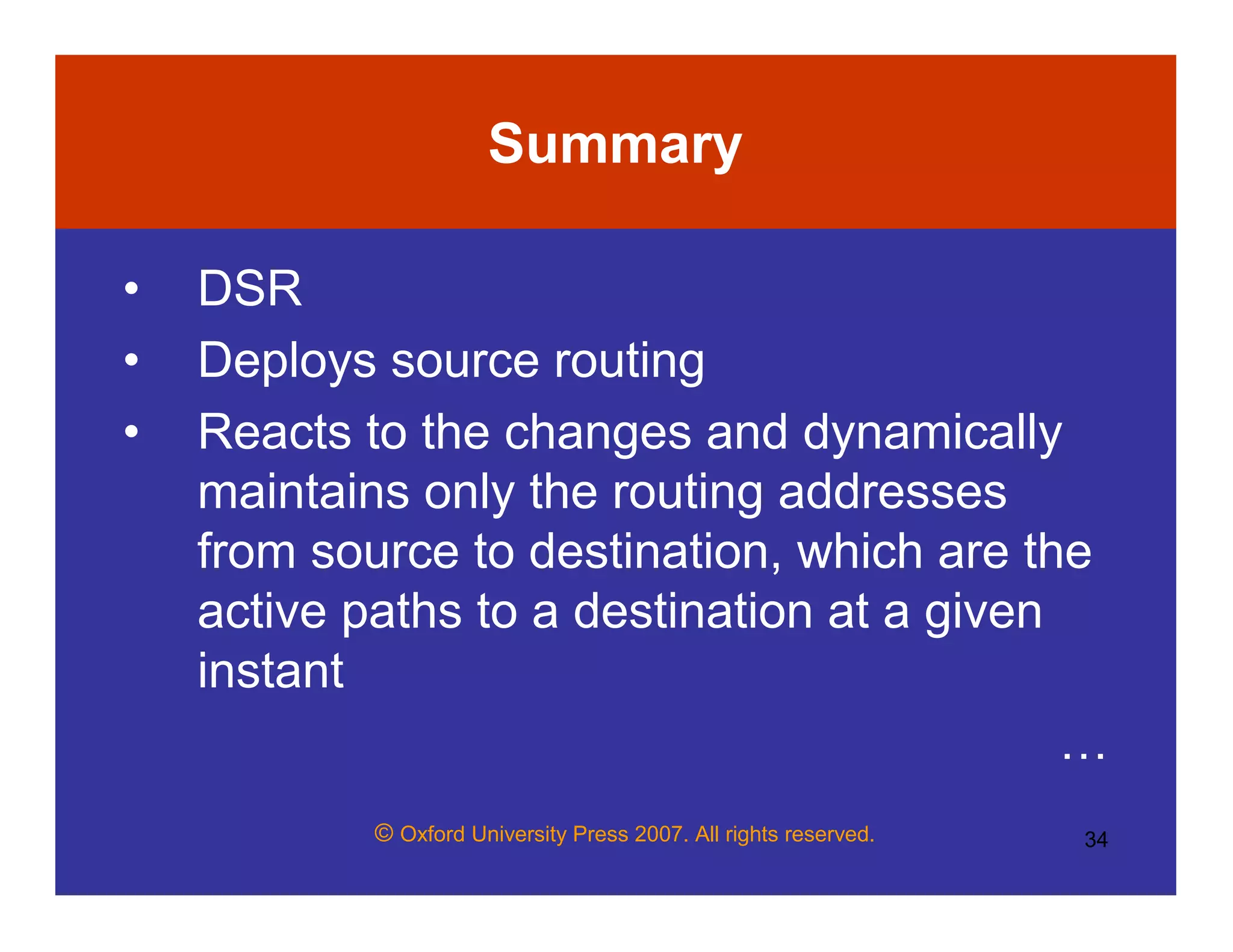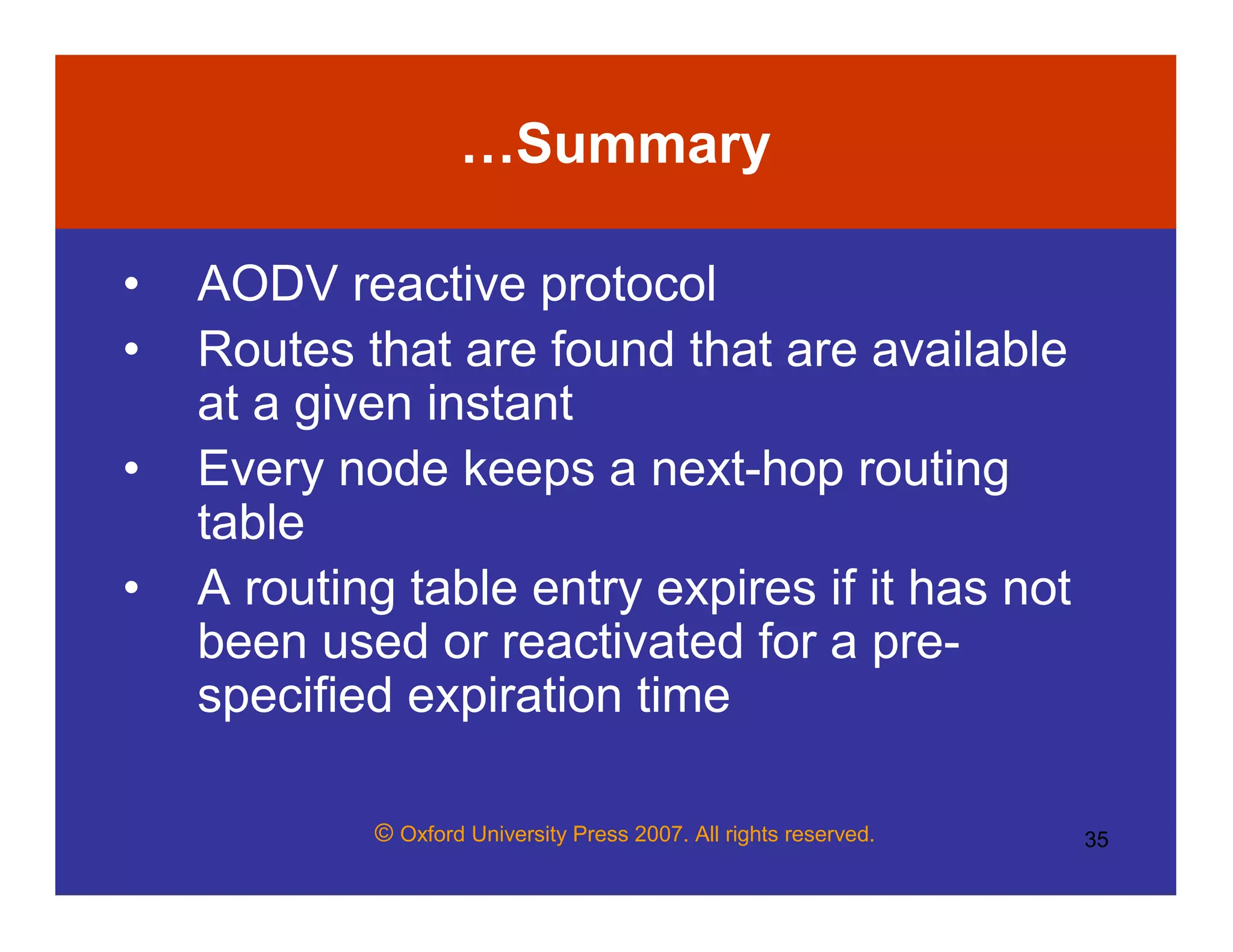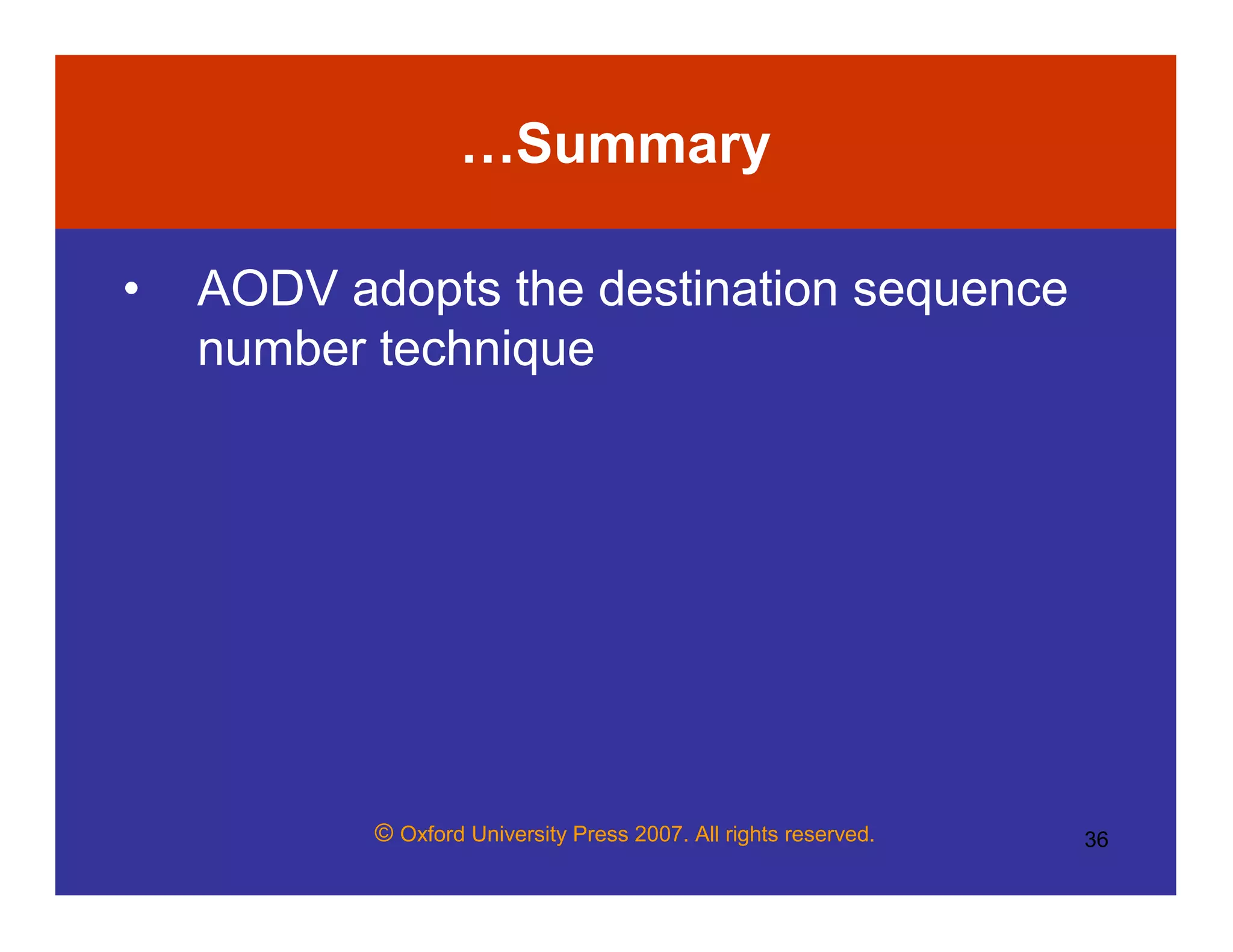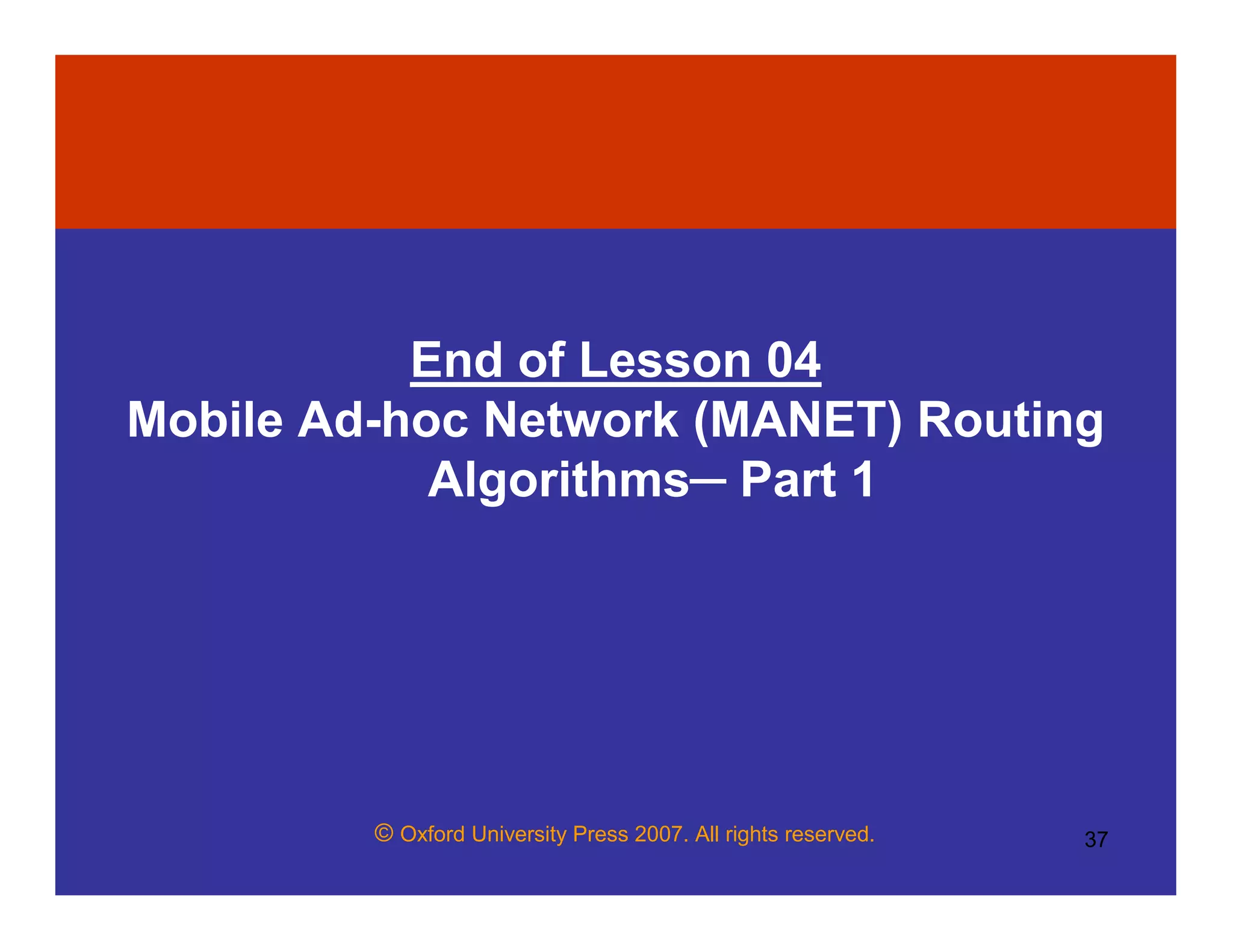DSR deploys source routing, reacting dynamically to changes by maintaining only active routing addresses from source to destination. AODV is also a reactive protocol that maintains only active routes, with each node keeping a next-hop routing table. Route entries expire after a time limit. AODV adopts destination sequence numbers to ensure loop-free and up-to-date routes.
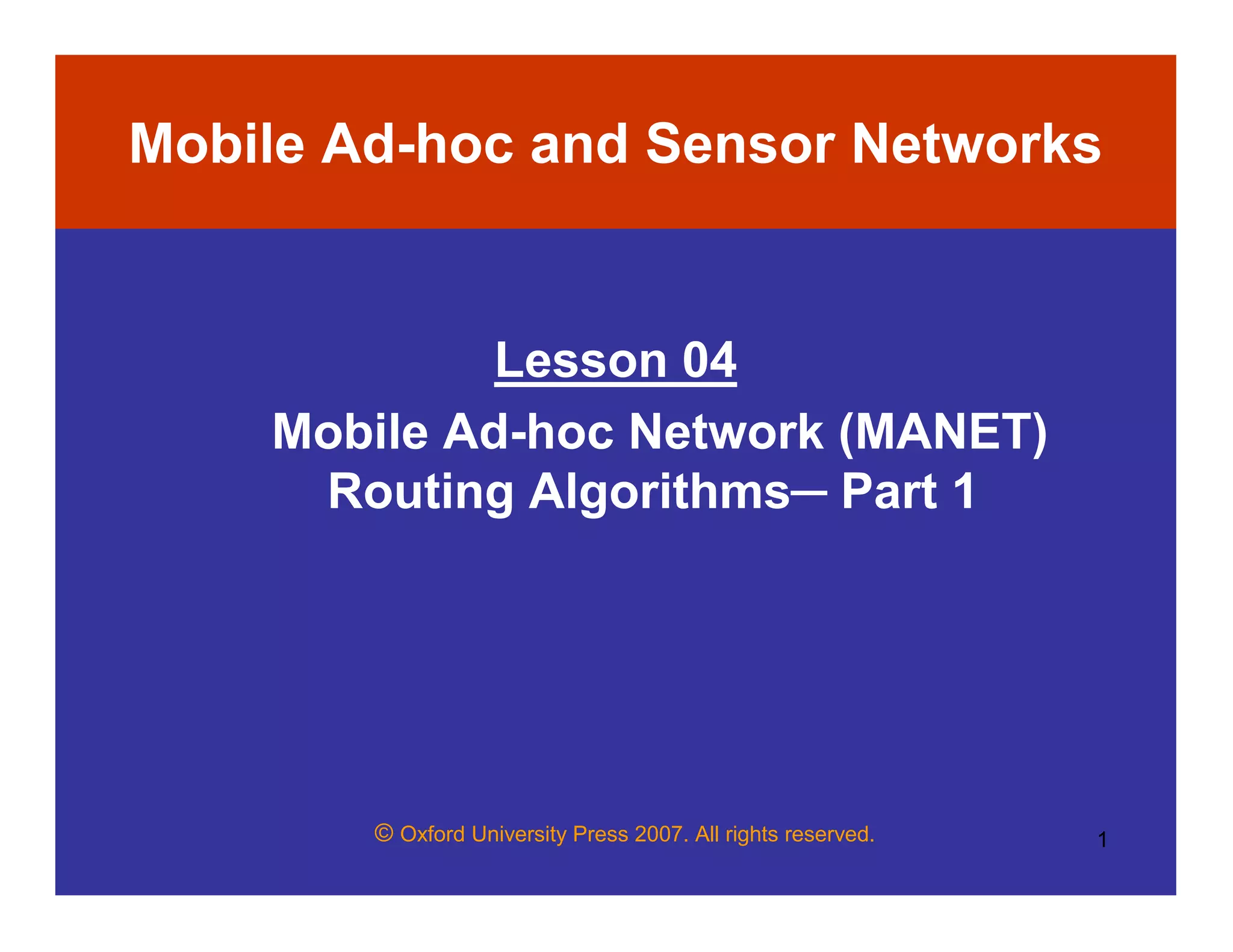
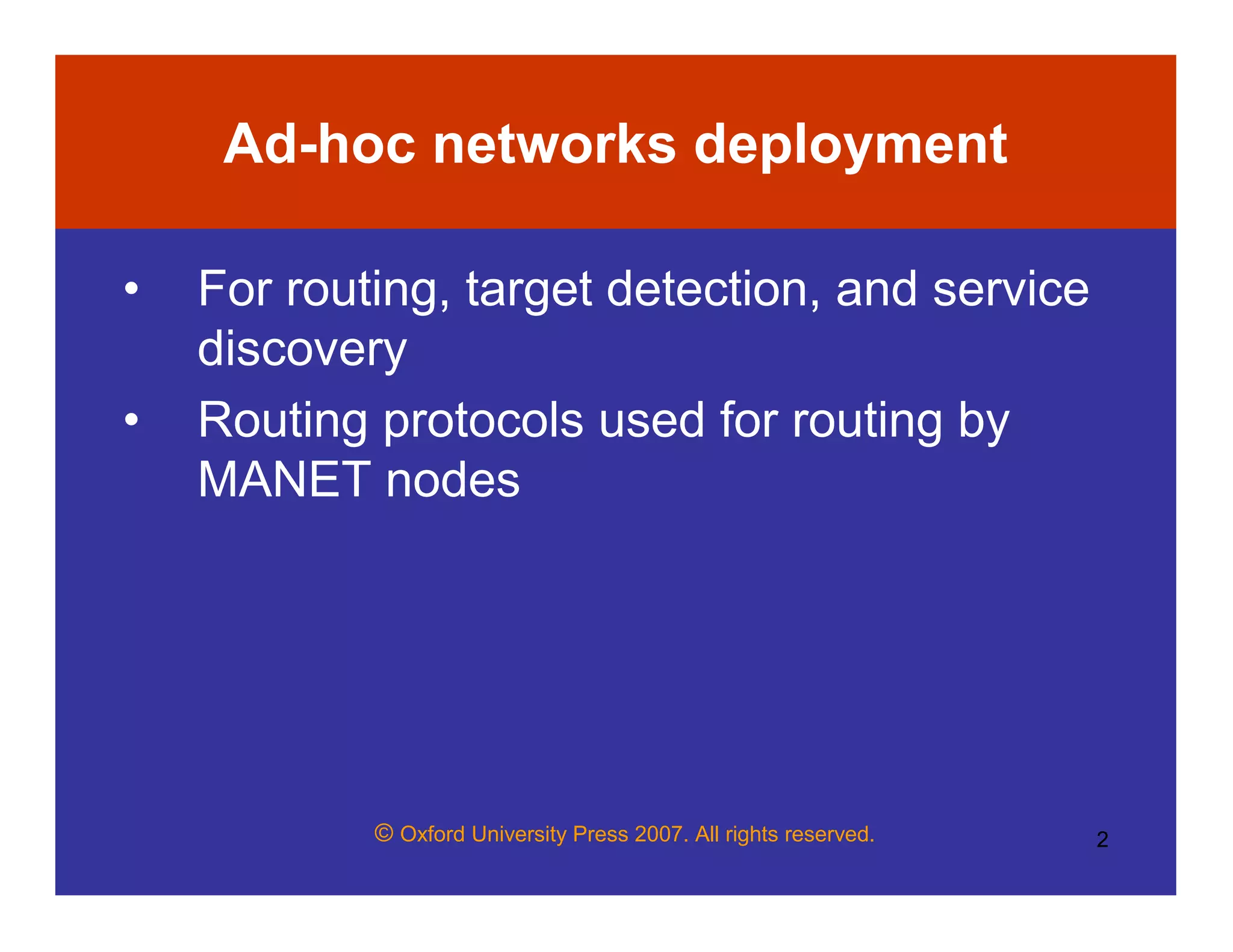
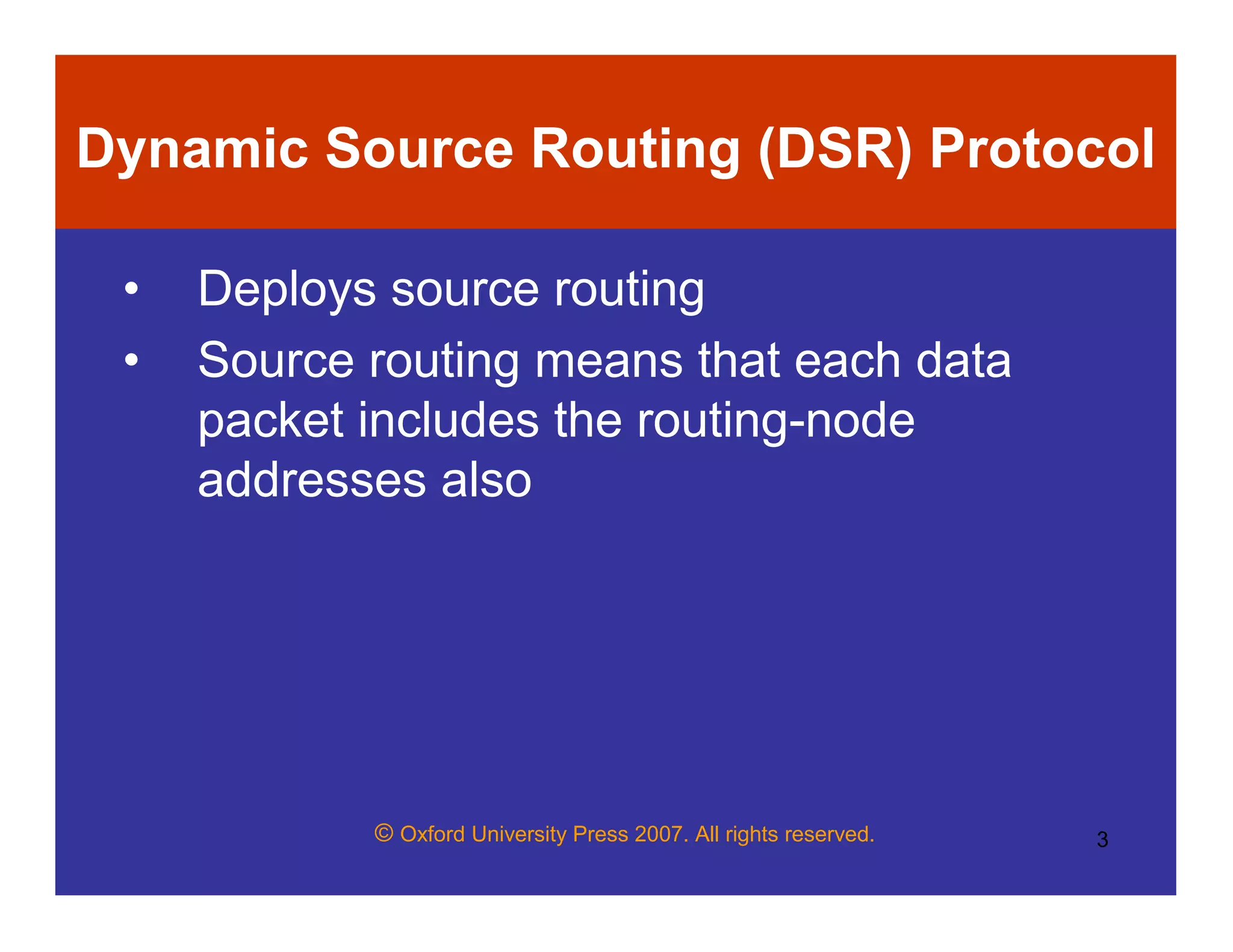
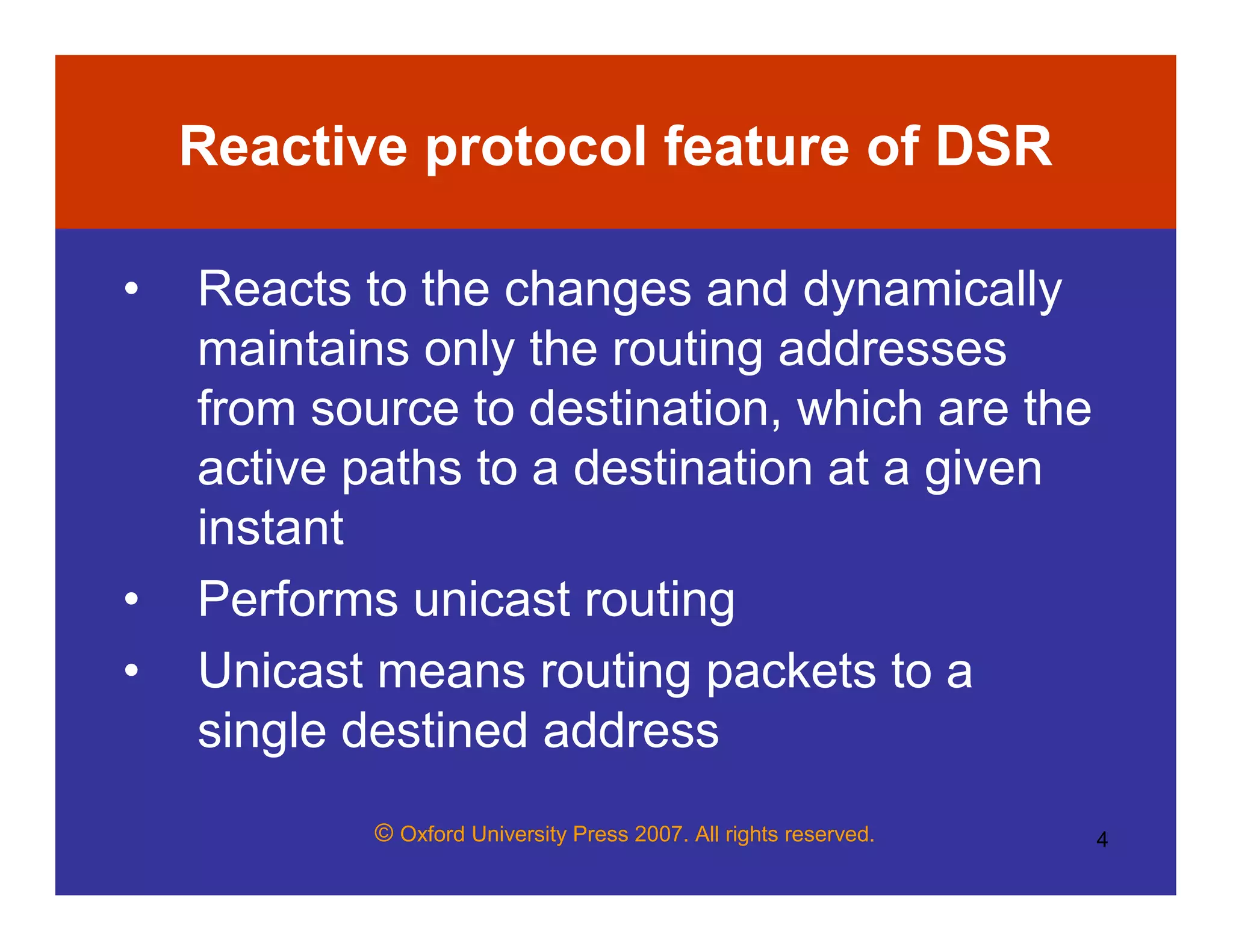
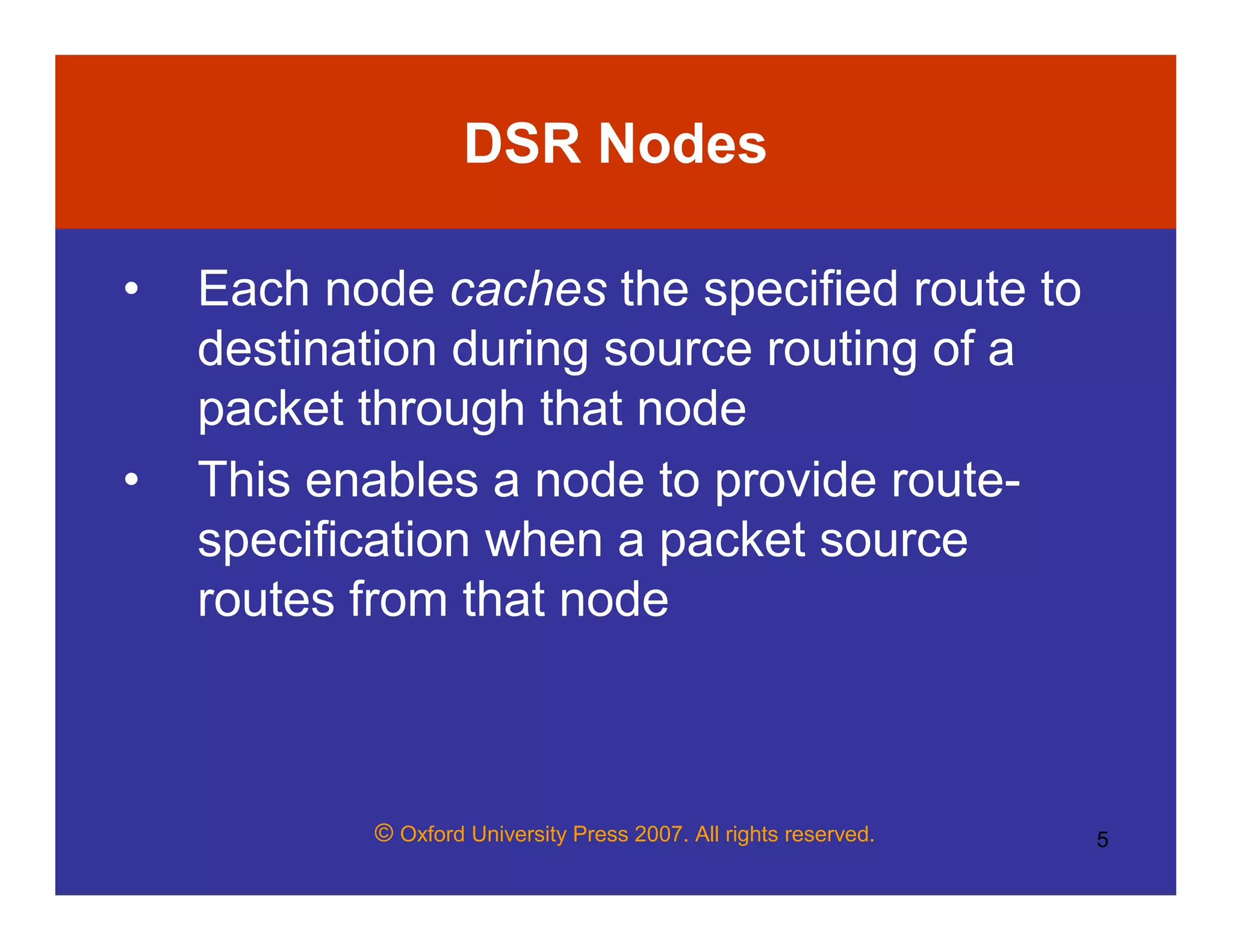
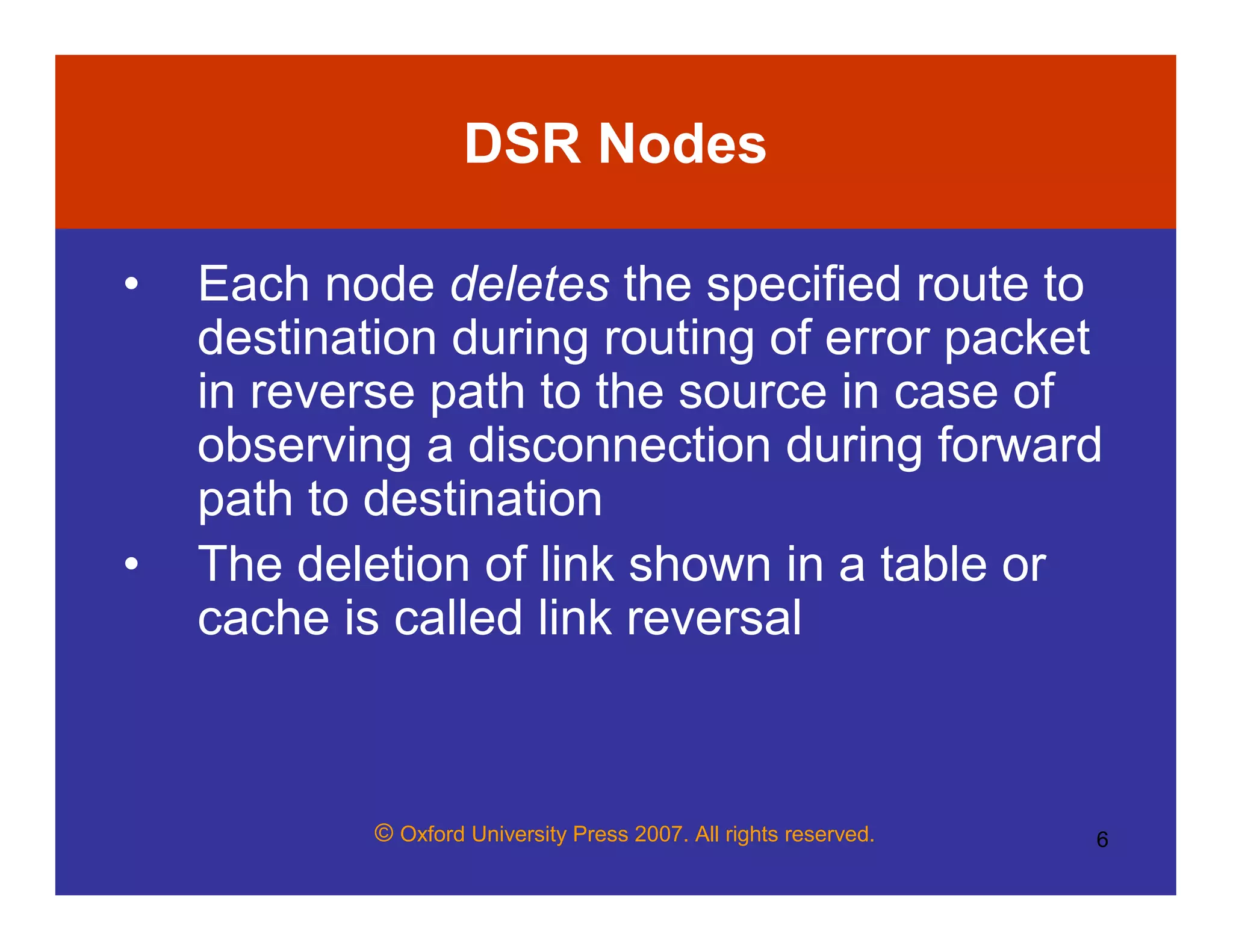
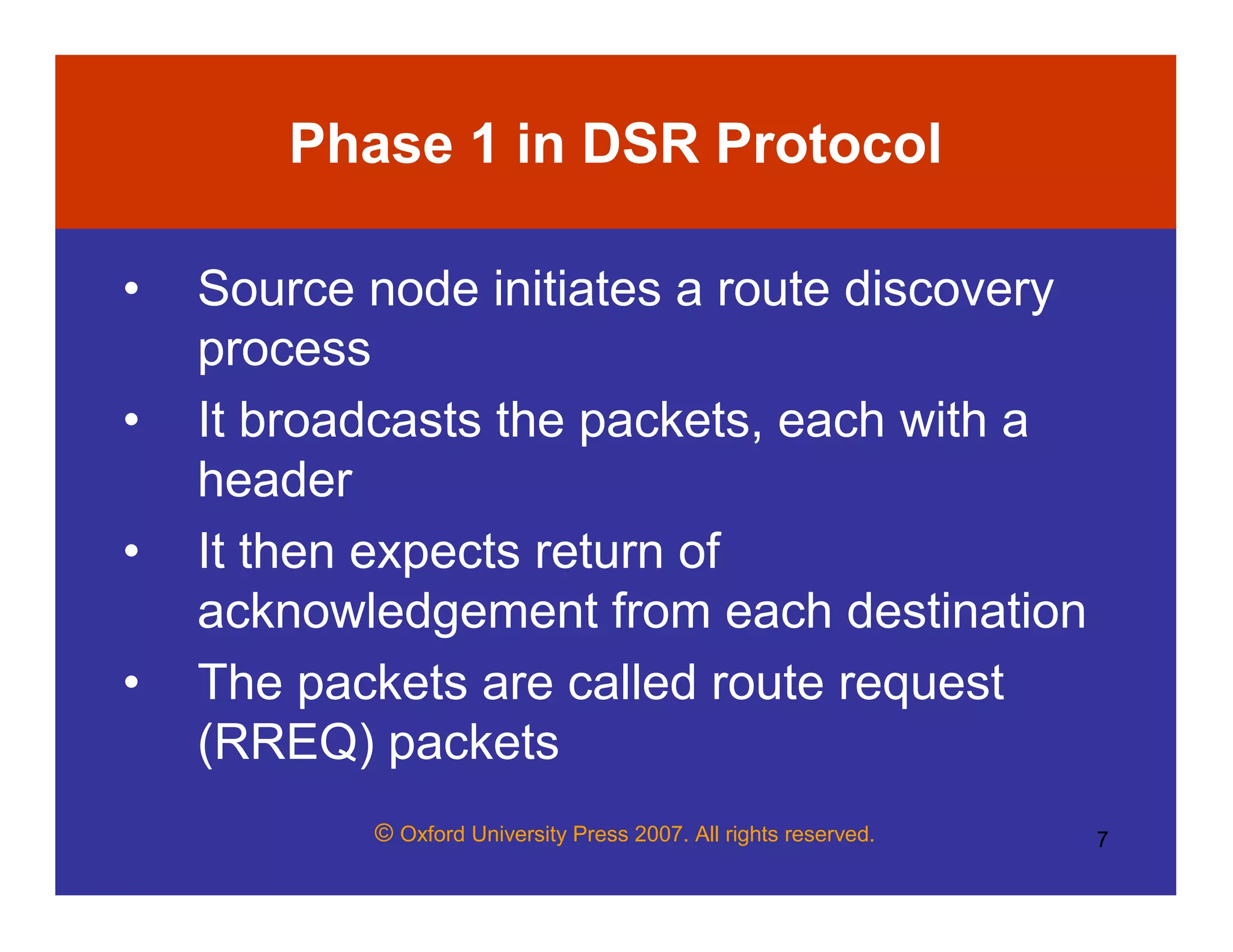
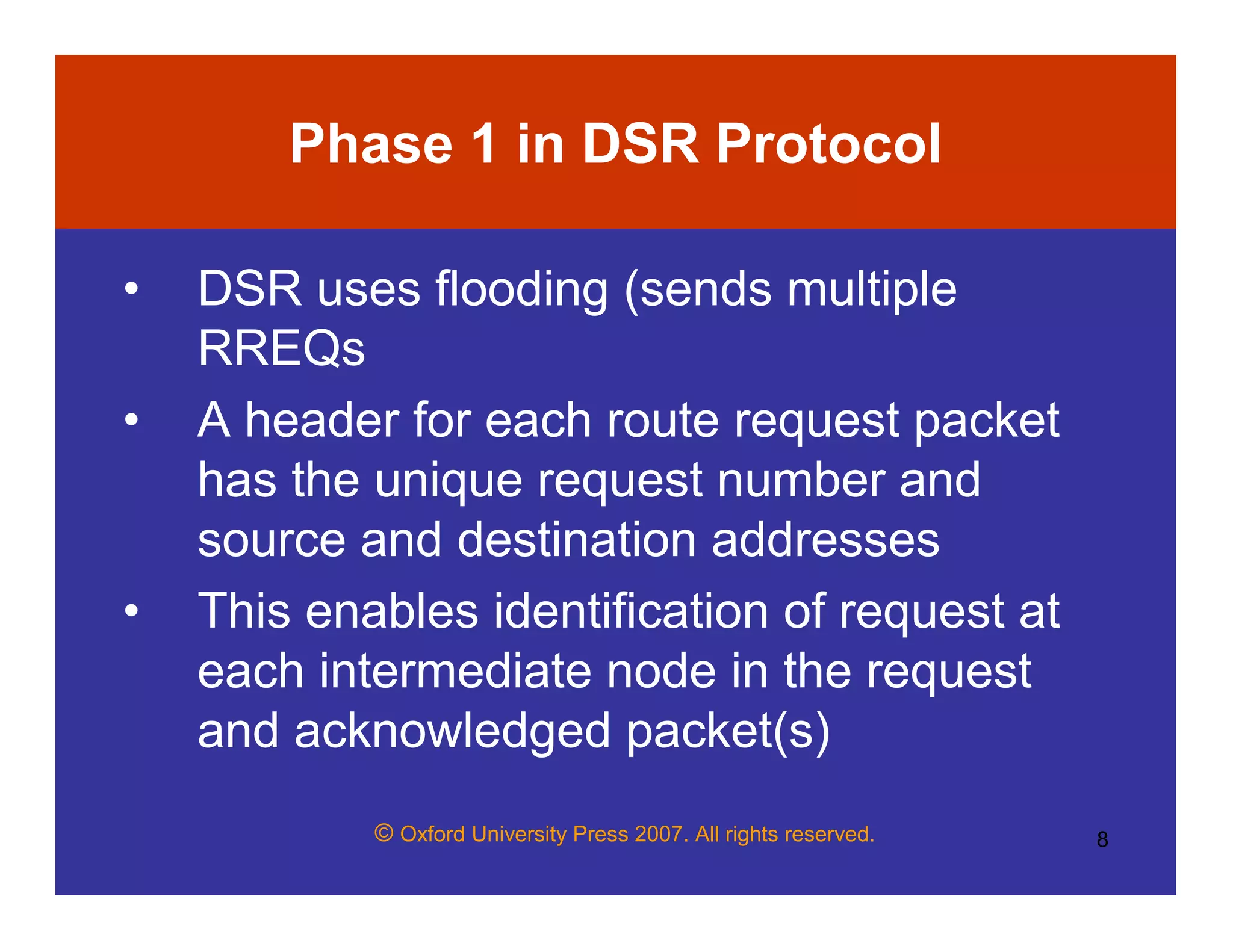
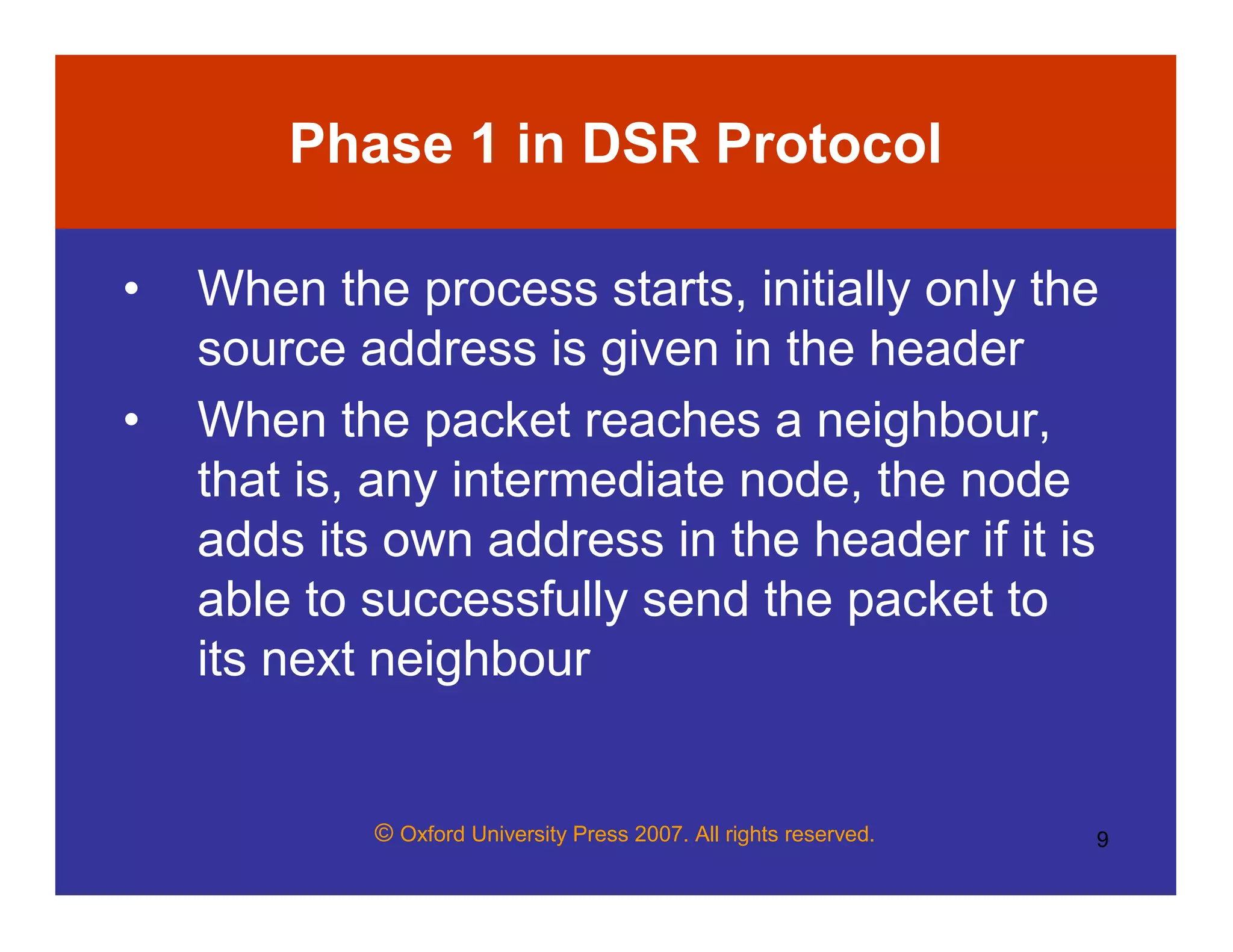
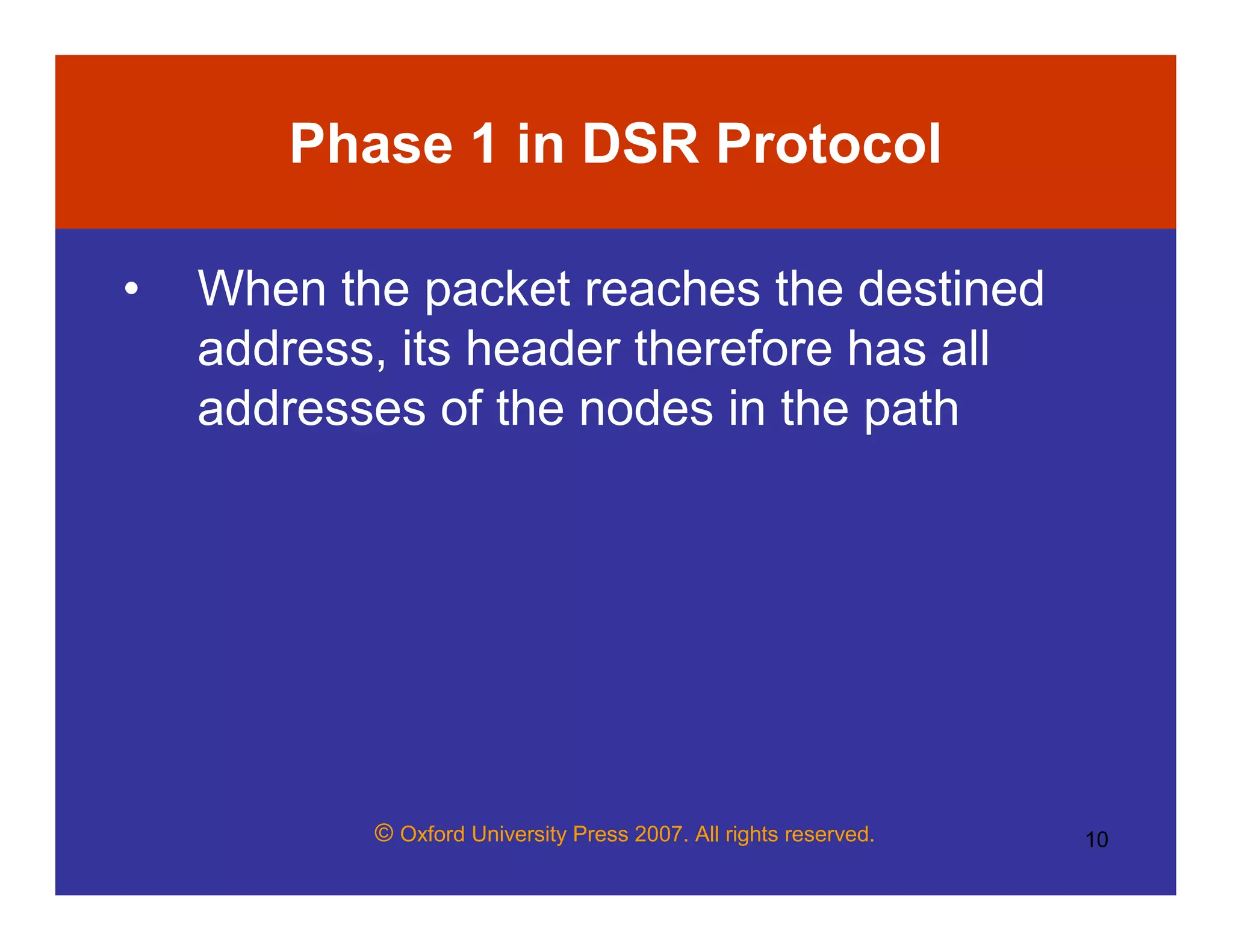
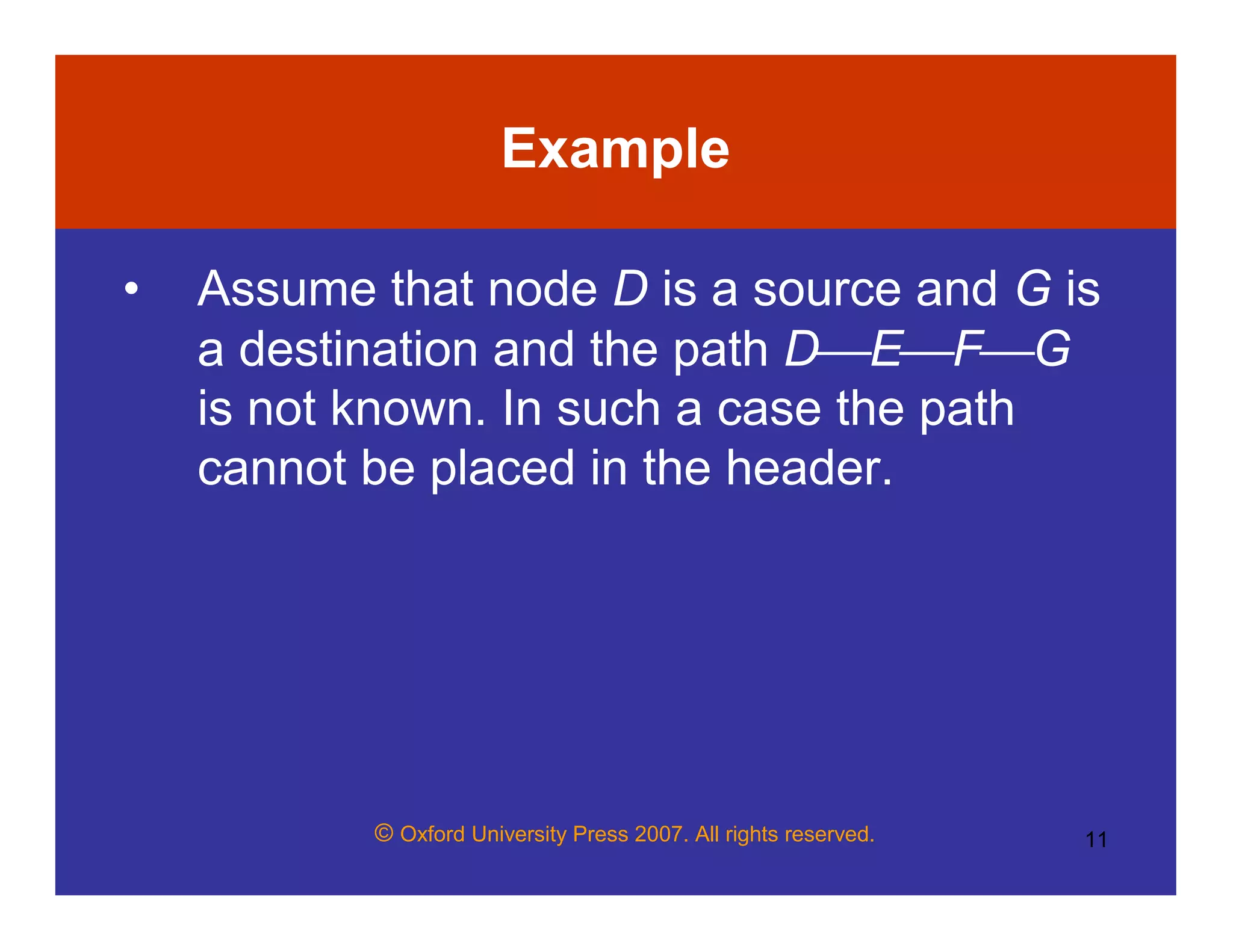
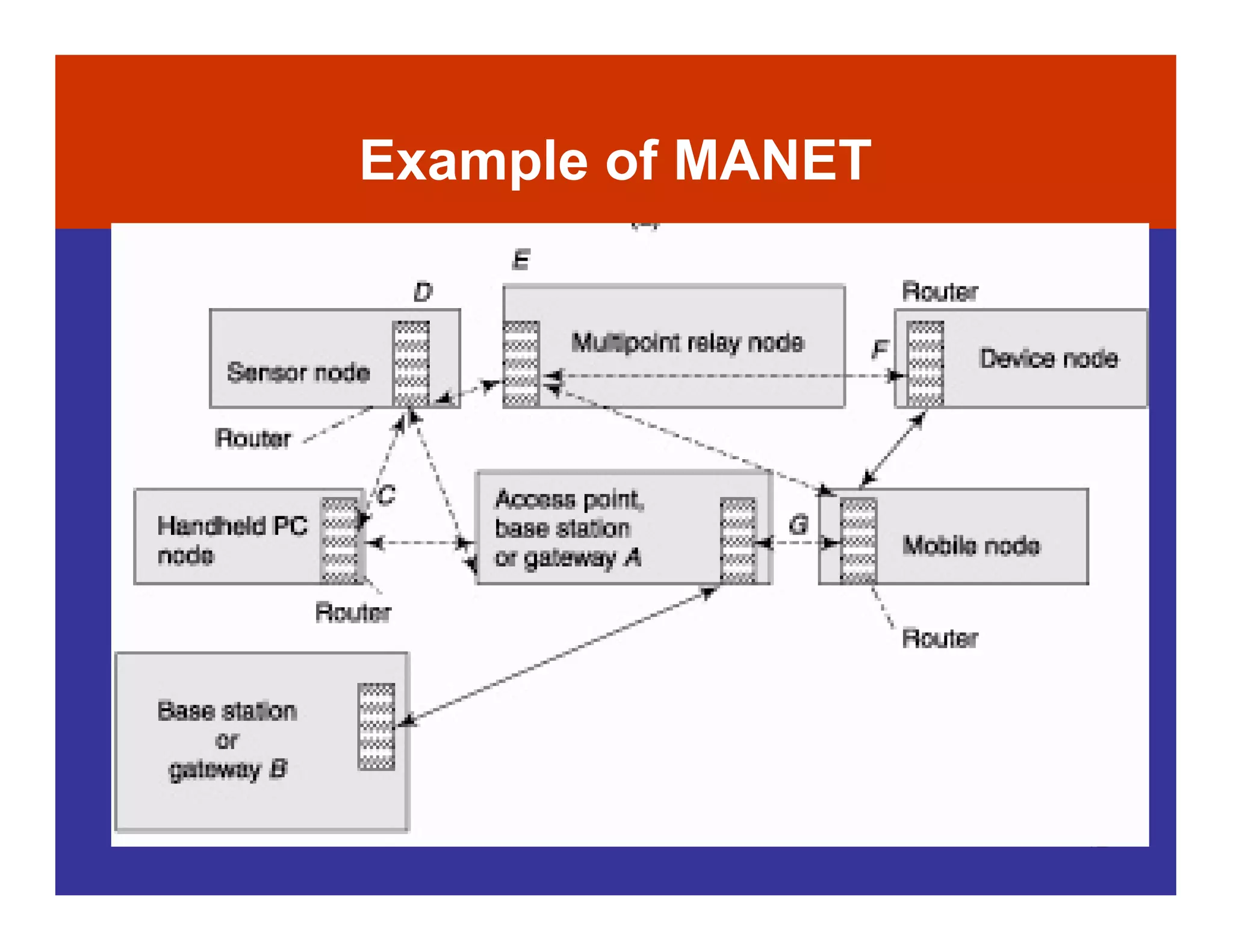
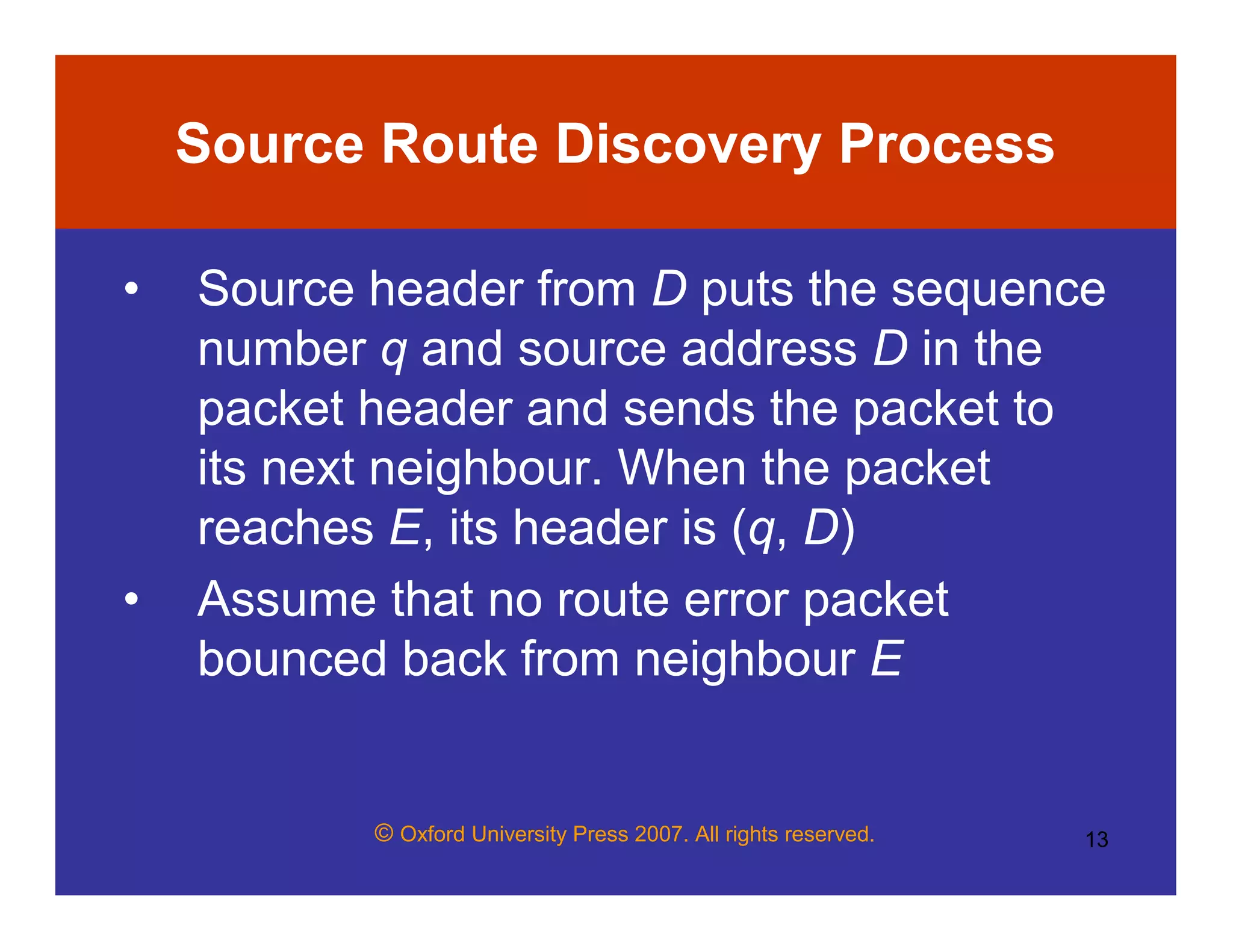
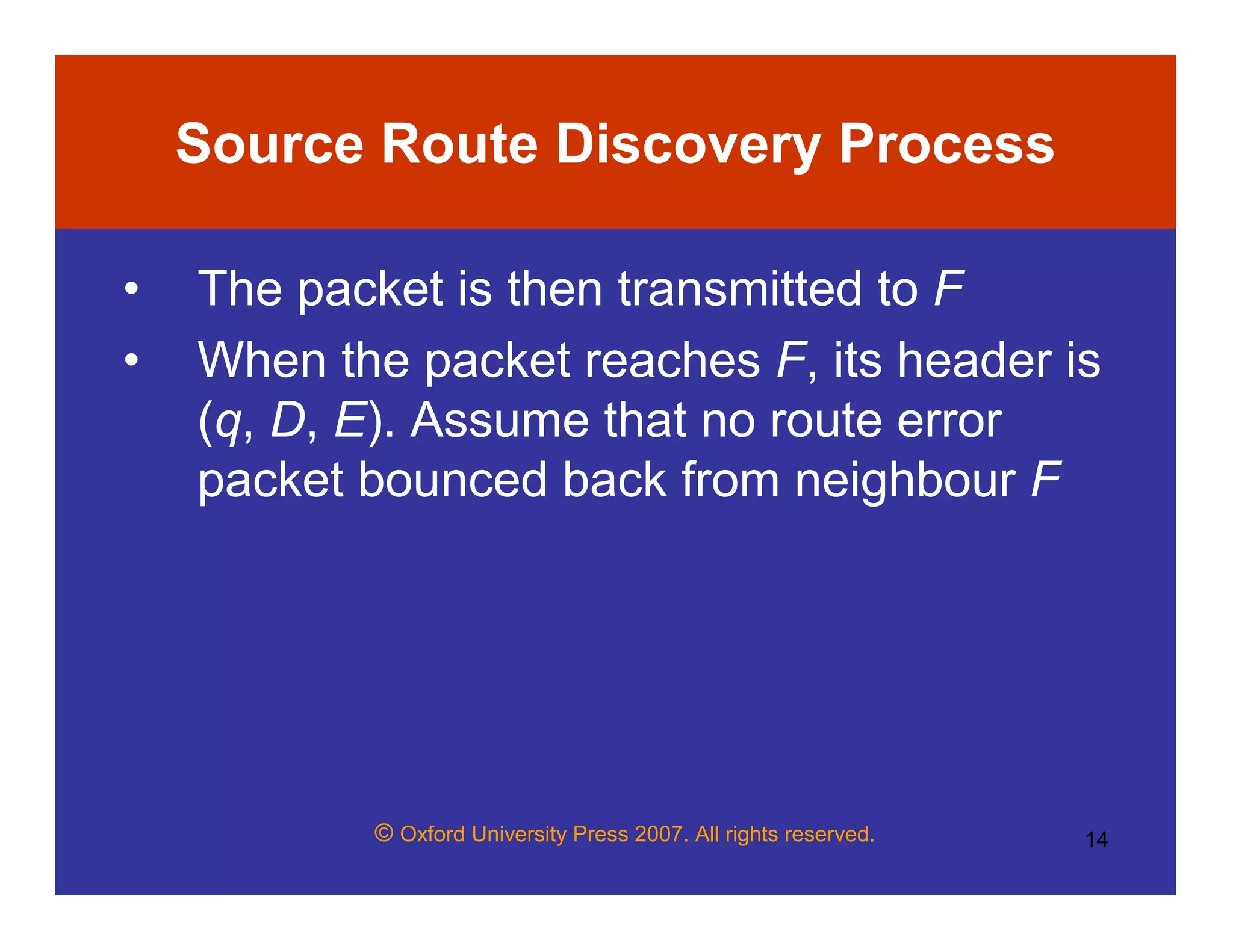
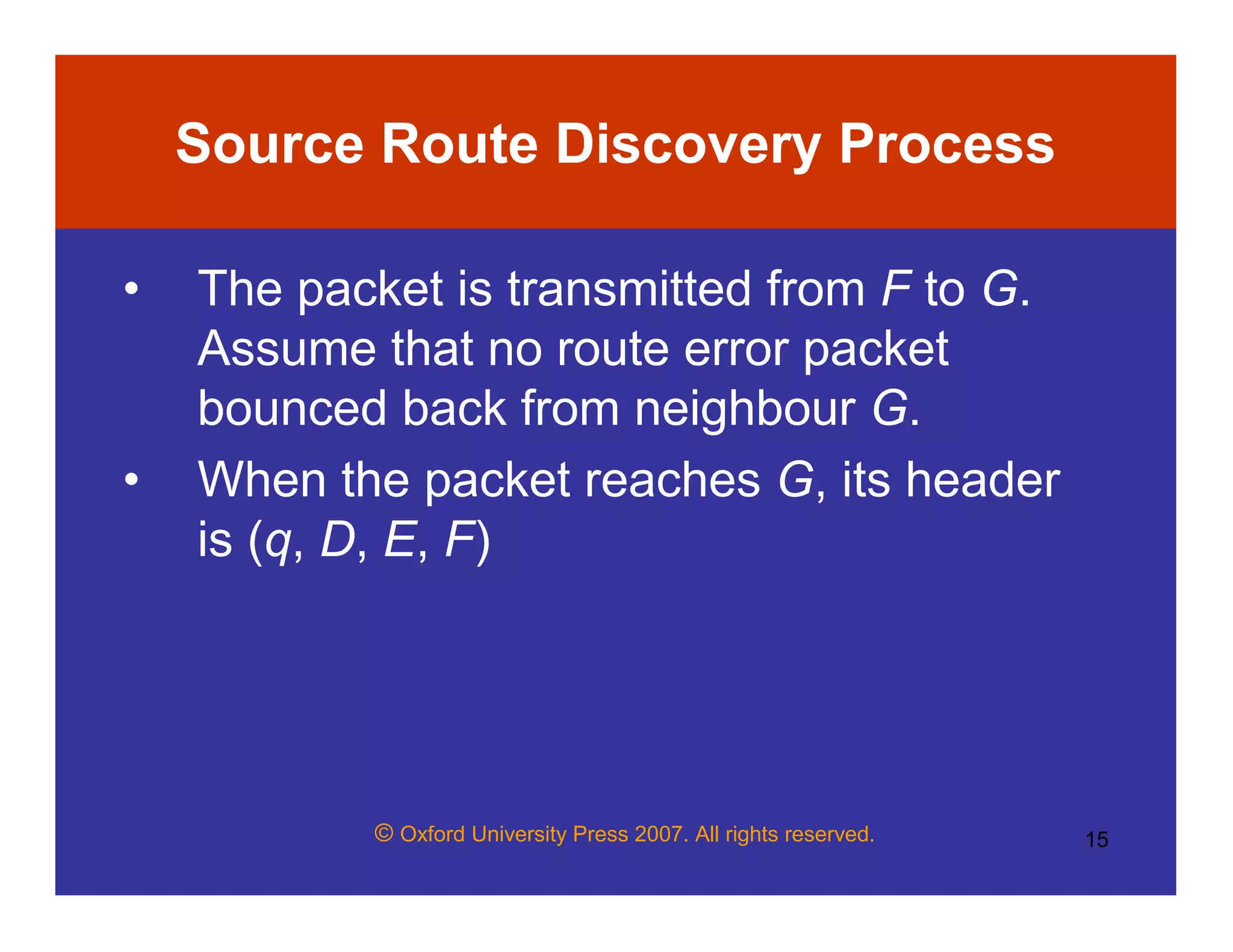
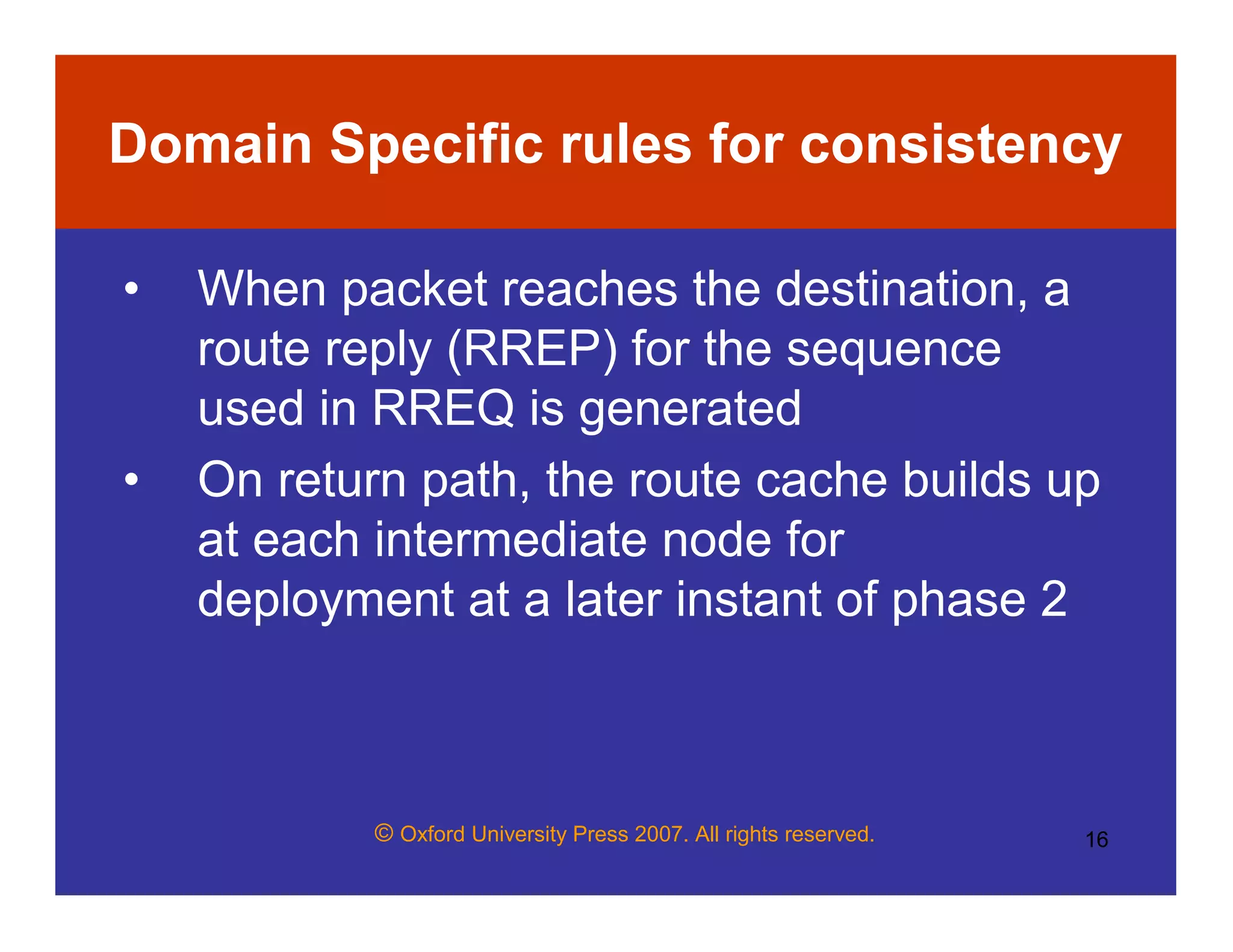
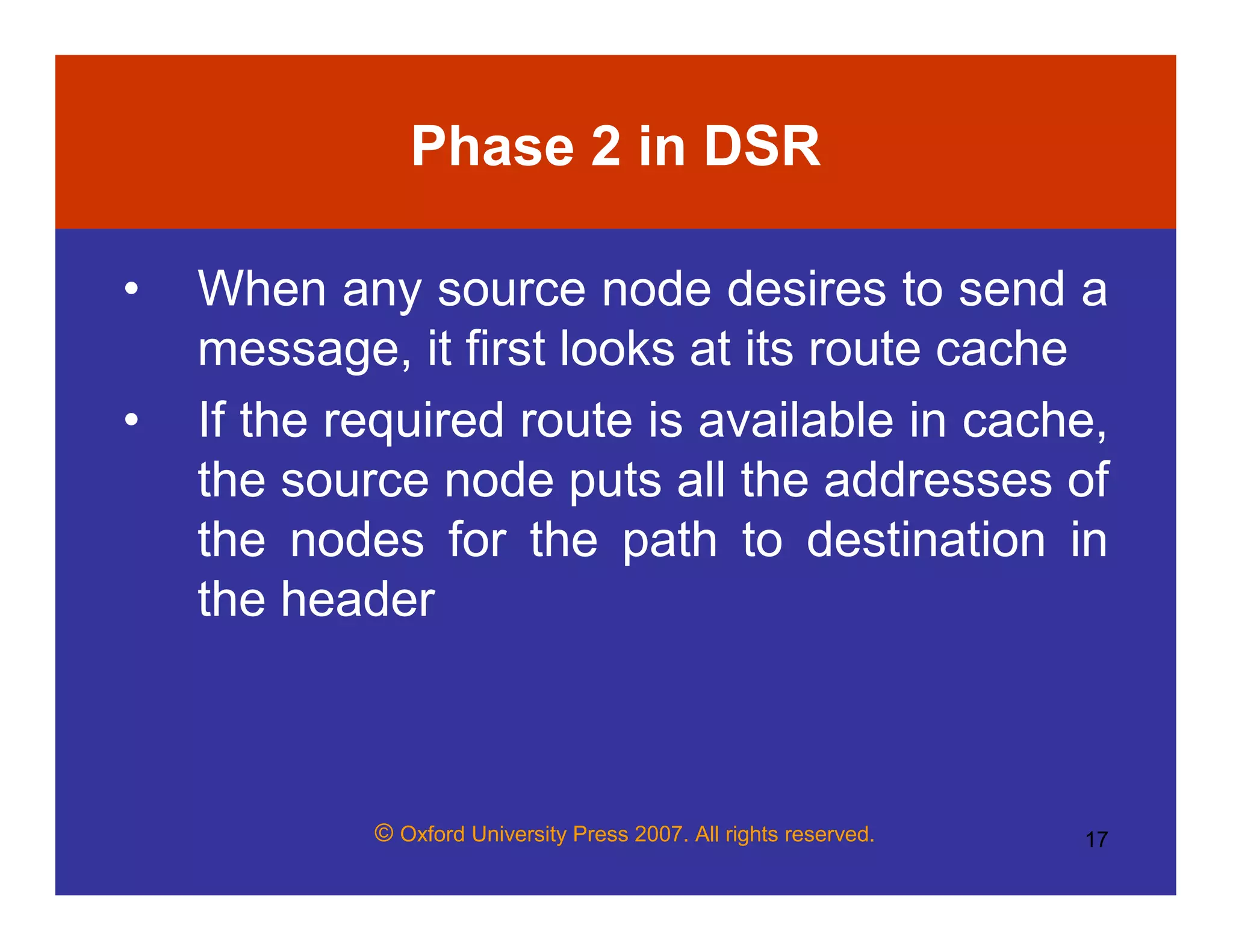
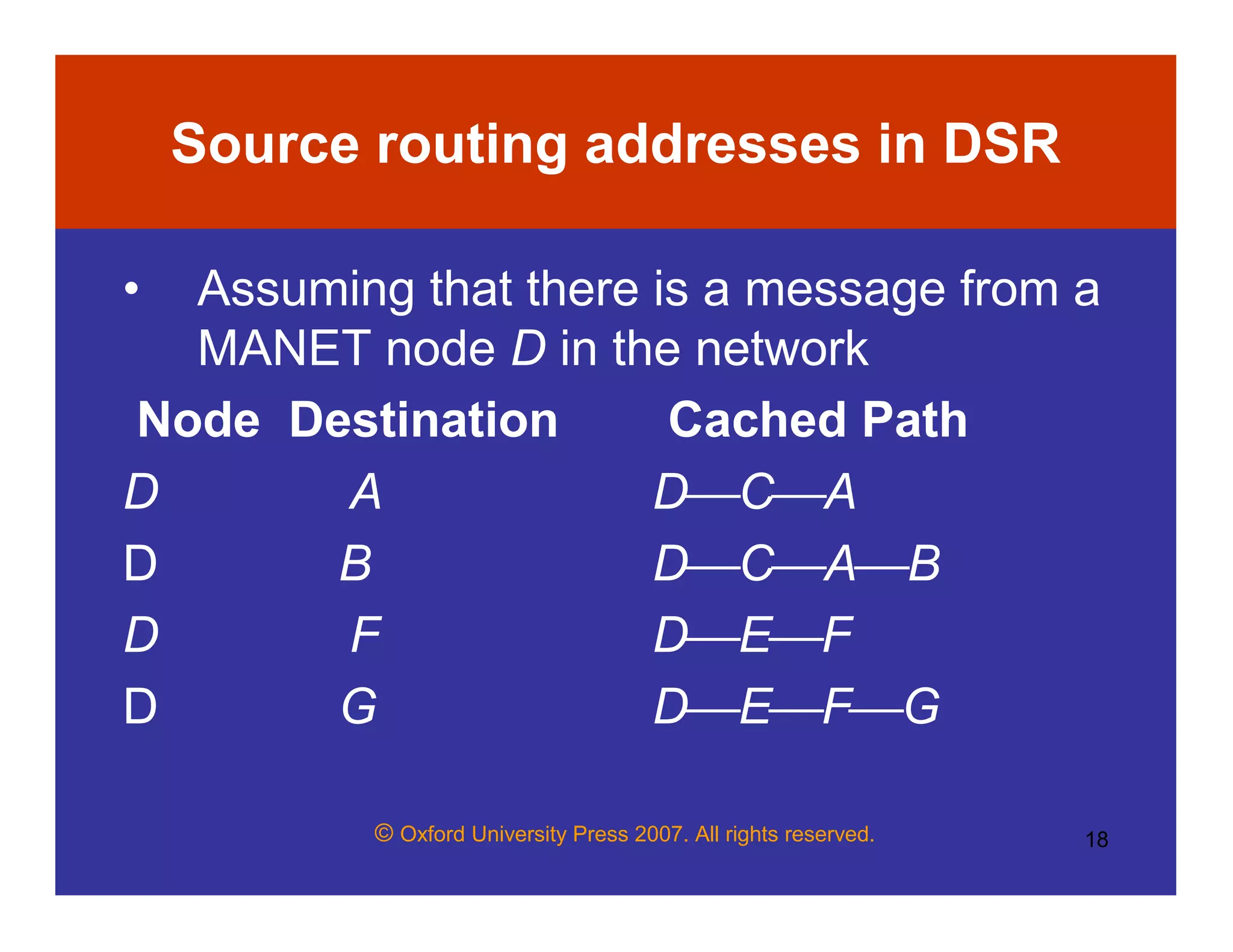
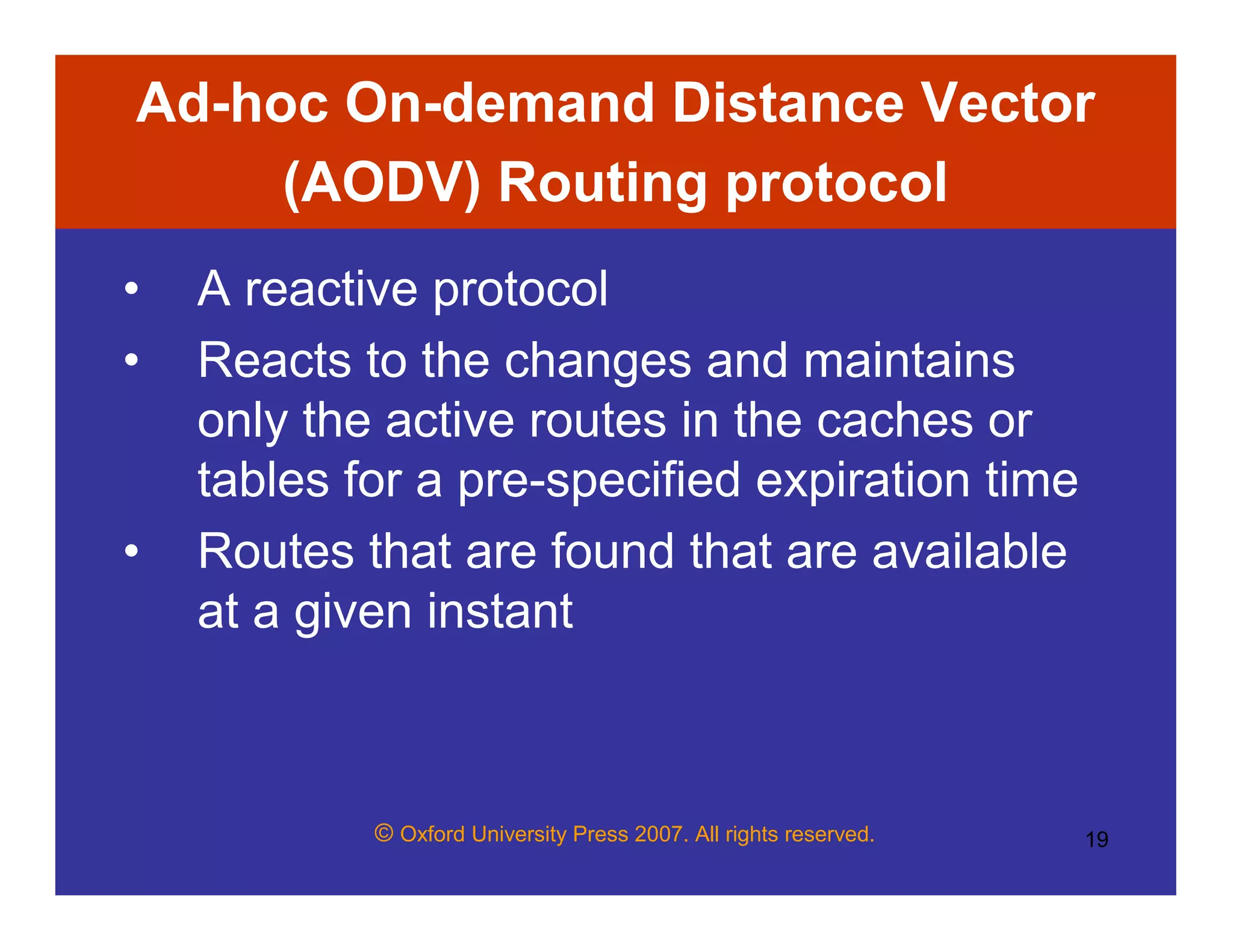
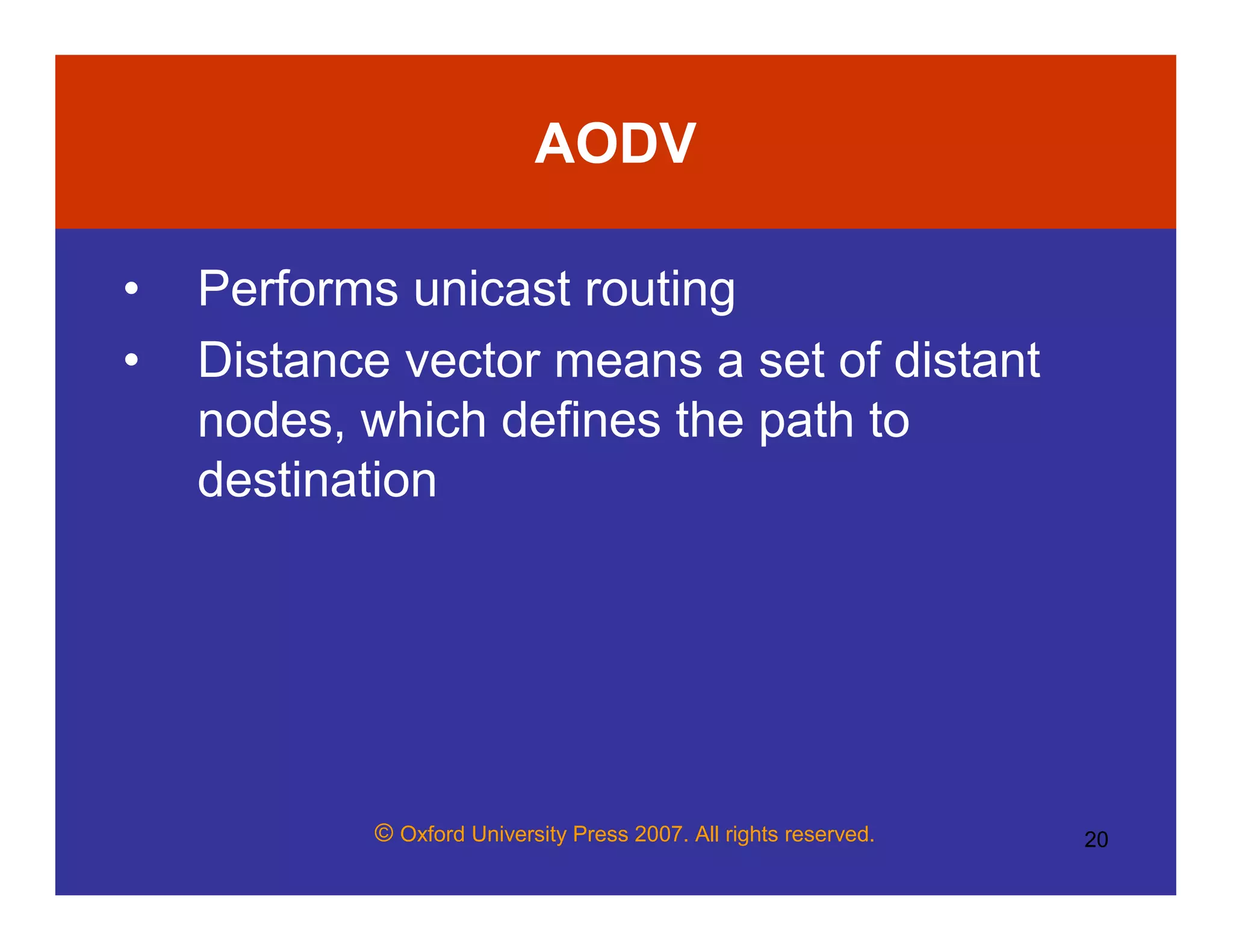
![© Oxford University Press 2007. All rights reserved. 21
AODV
• DEFG is a distance vector for
source-destination pair D and G
• In AODV, a distance vector is provided
on demand during forwarding of a packet
to destination by a node in the path and
not by the route cache providing path
through the header in the source data
packet [phase 2]](https://image.slidesharecdn.com/mobilecompchap11l04manetroutingalgorpart1-160116162841/75/Mobile-Ad-hoc-Network-MANET-Routing-Algorithms-Part-1-21-2048.jpg)
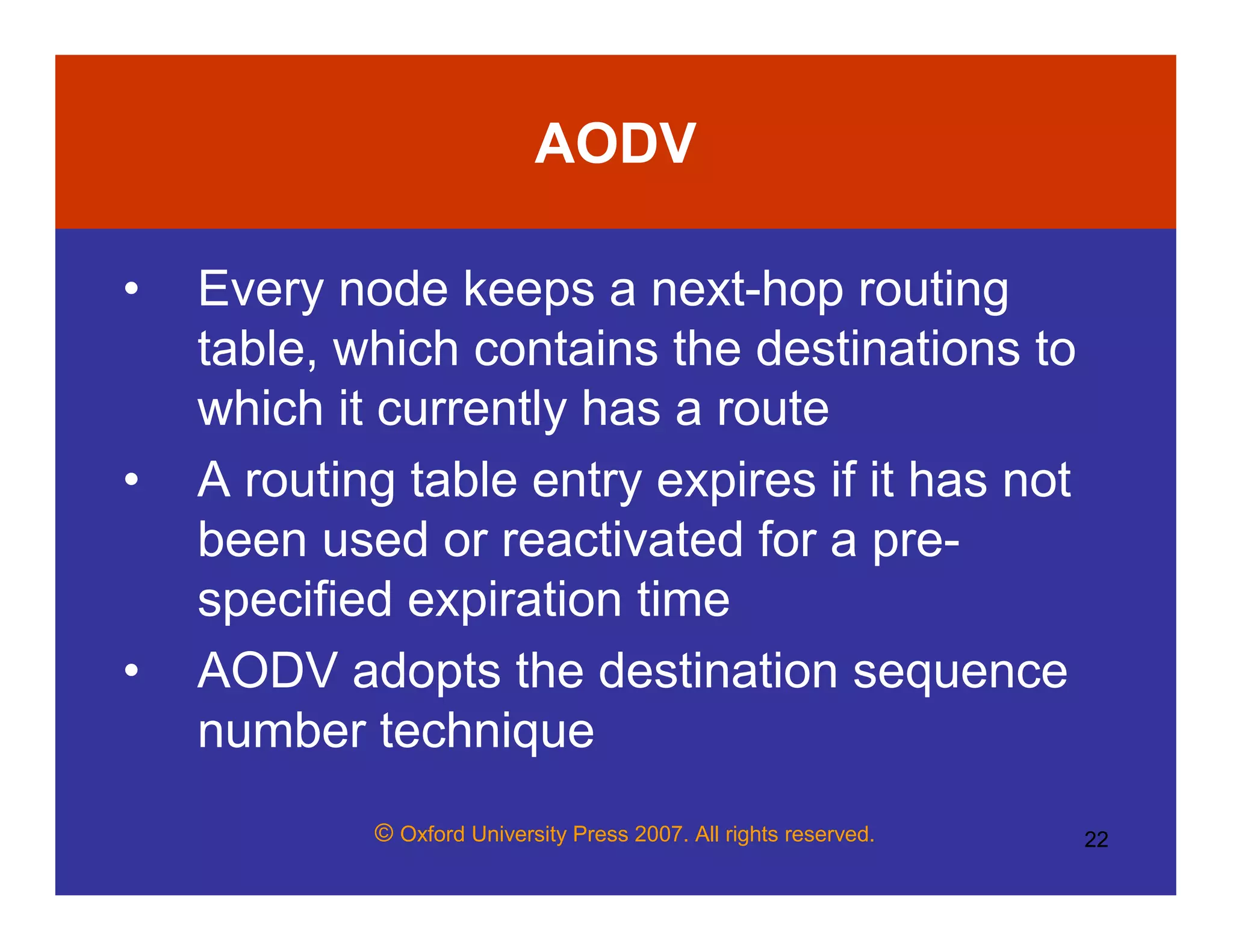
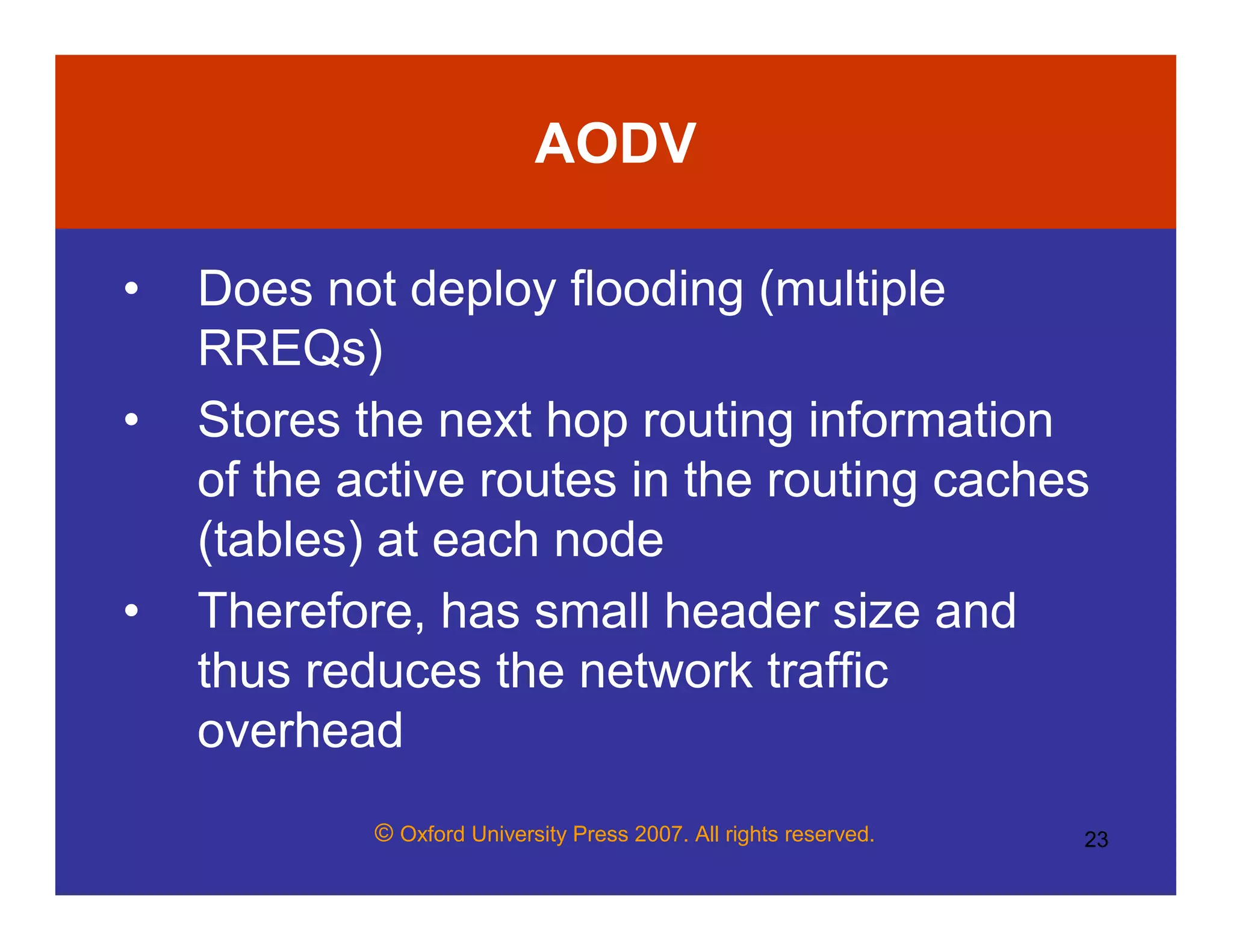
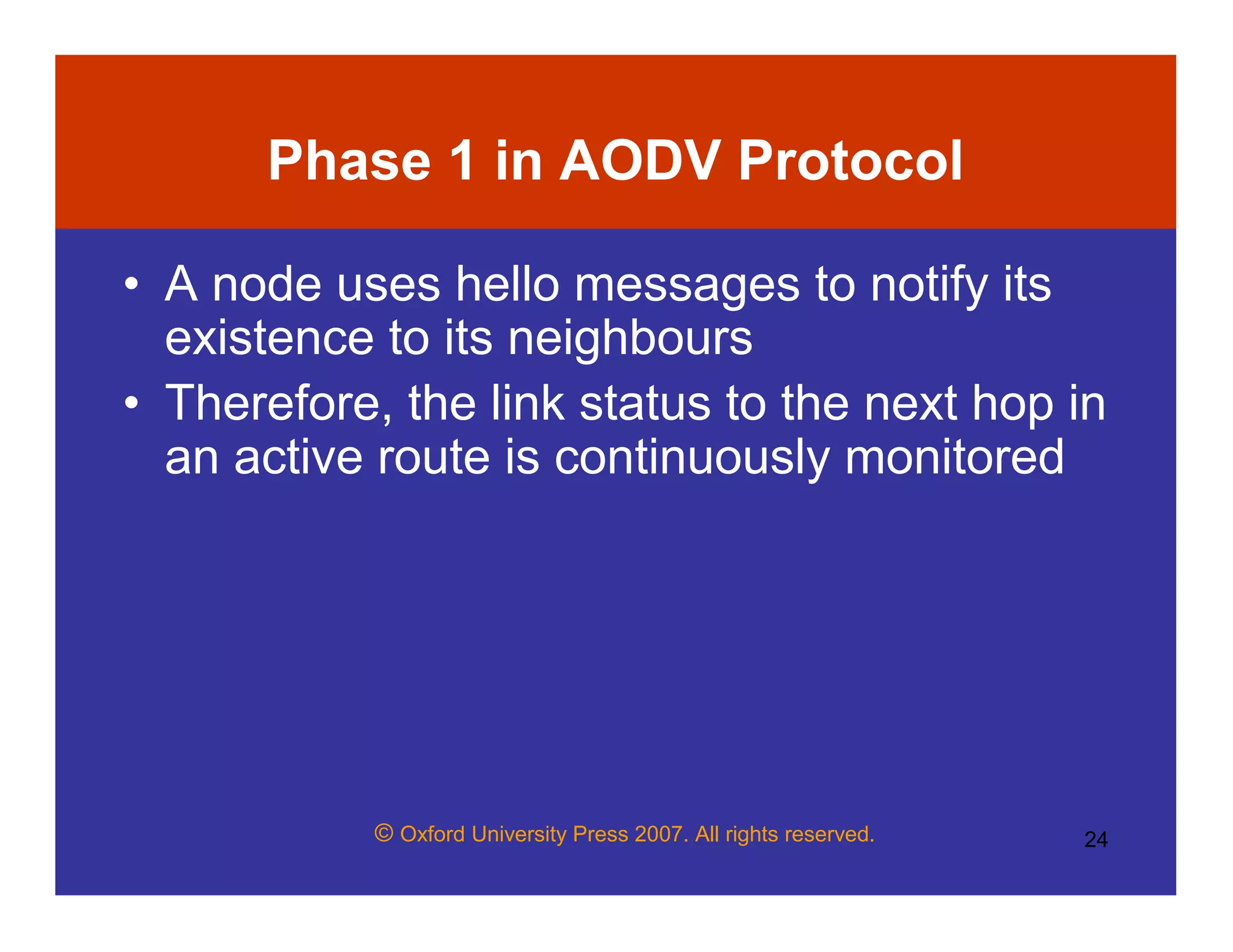
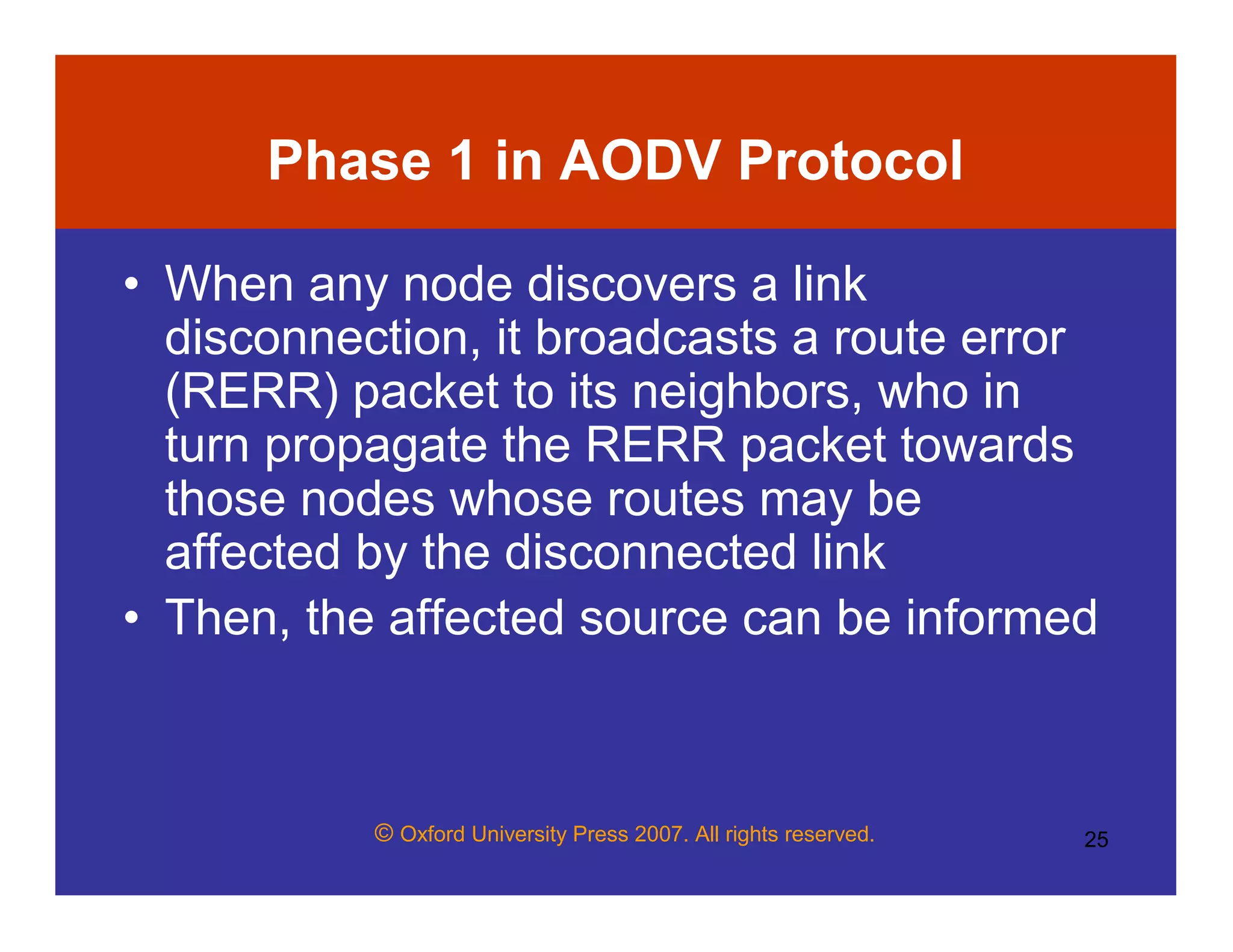
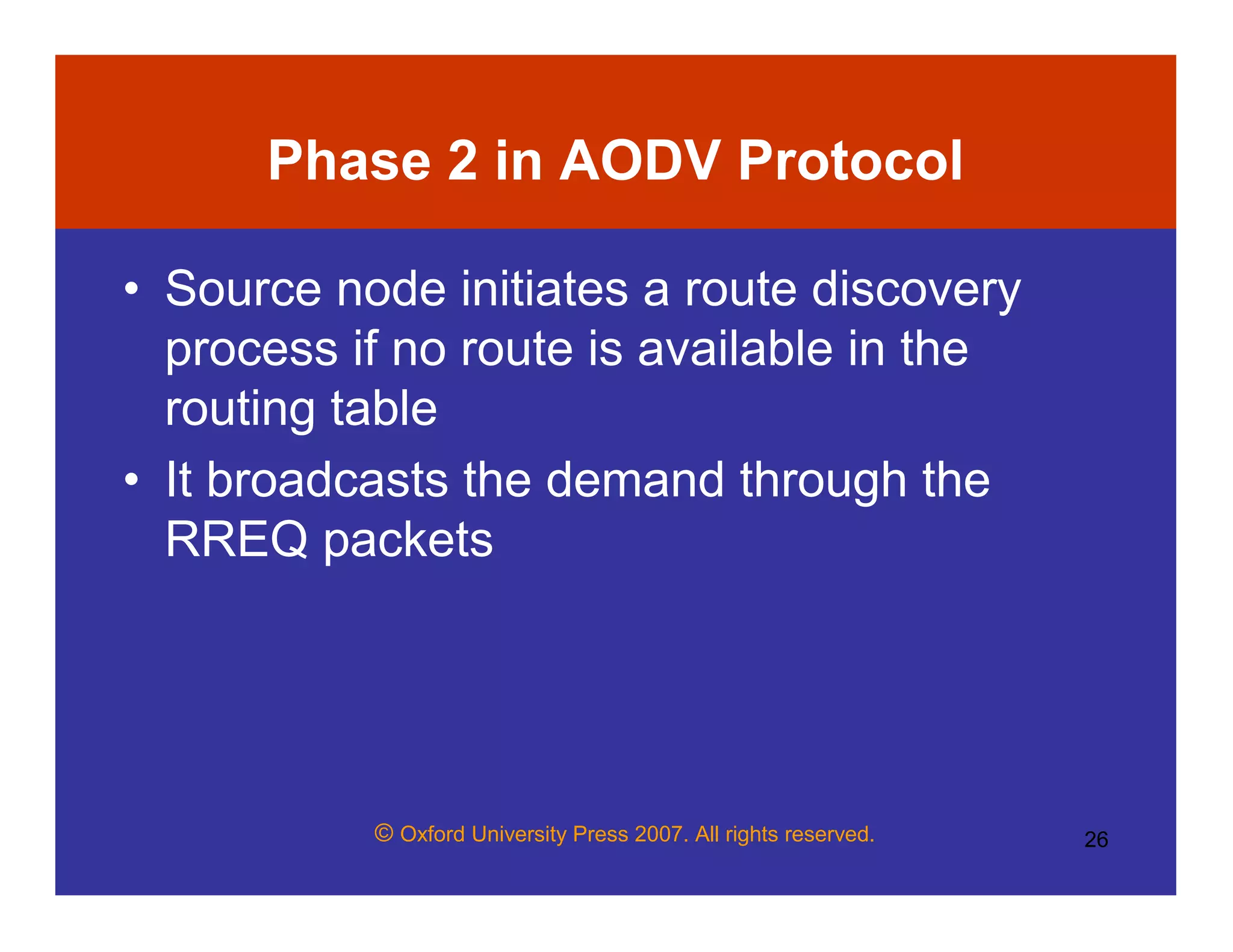
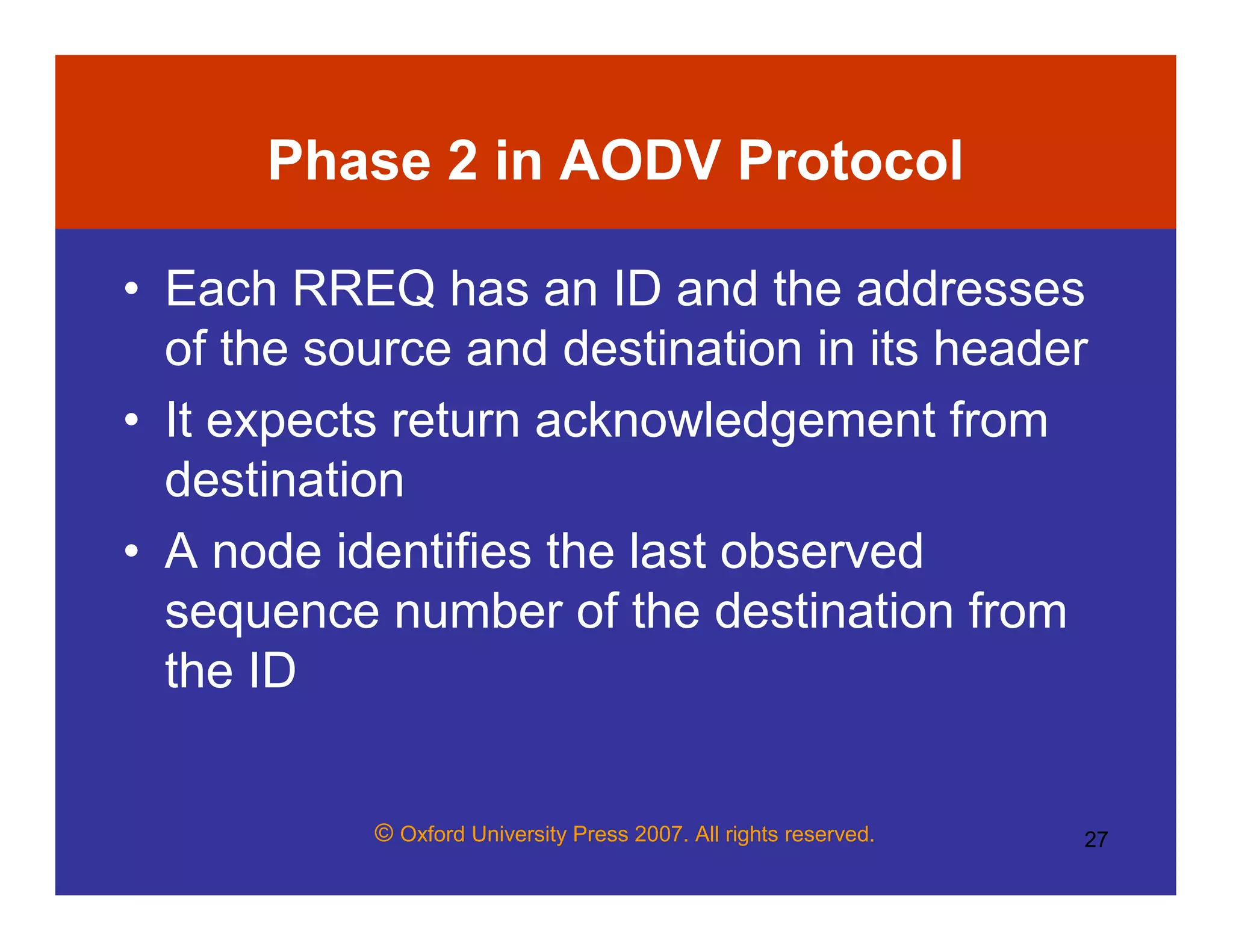
![© Oxford University Press 2007. All rights reserved. 28
Phase 2 in AODV Protocol
• Each RREQ starts with a small TTL (time
to live) value [Number of attempts]
• If the destination is not found during the
TTL, the TTL is increased in subsequent
RREQ packets
• The node also identifies sequence number
of source node](https://image.slidesharecdn.com/mobilecompchap11l04manetroutingalgorpart1-160116162841/75/Mobile-Ad-hoc-Network-MANET-Routing-Algorithms-Part-1-28-2048.jpg)
